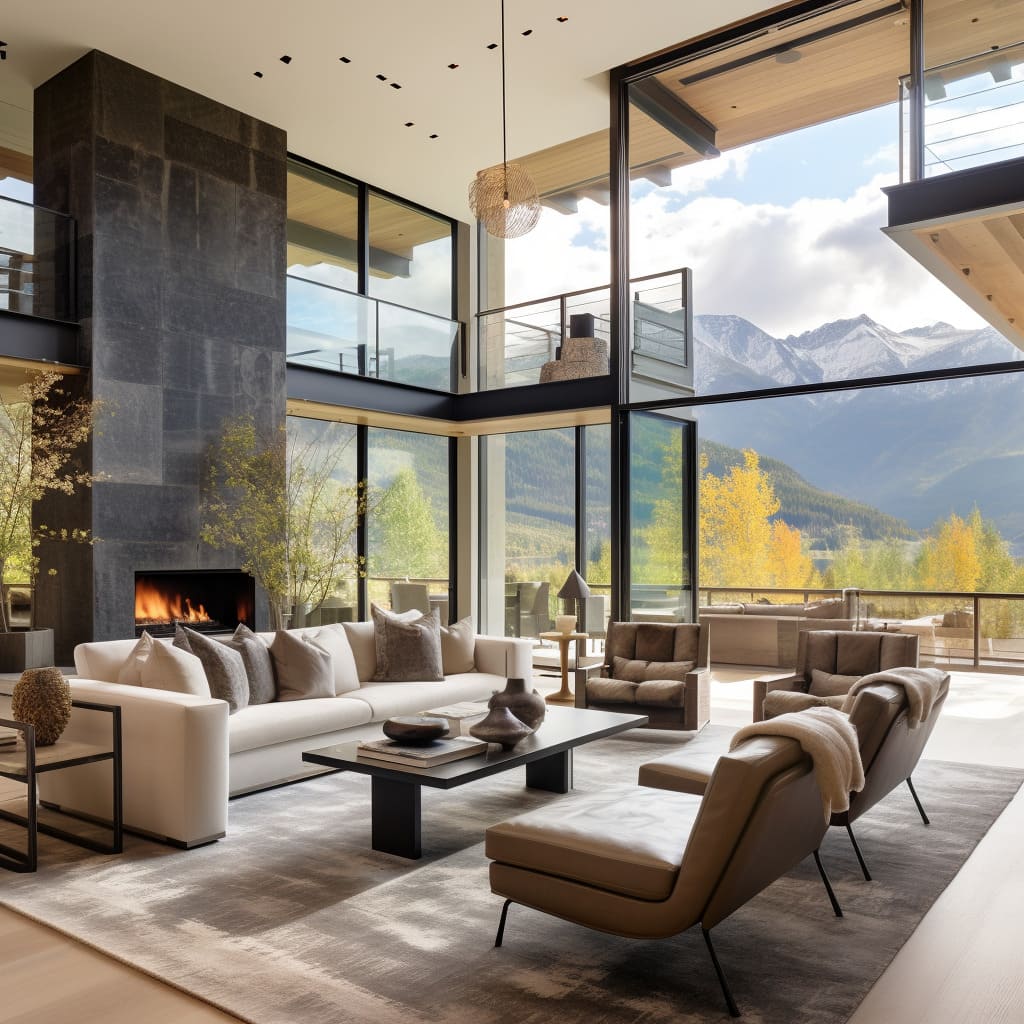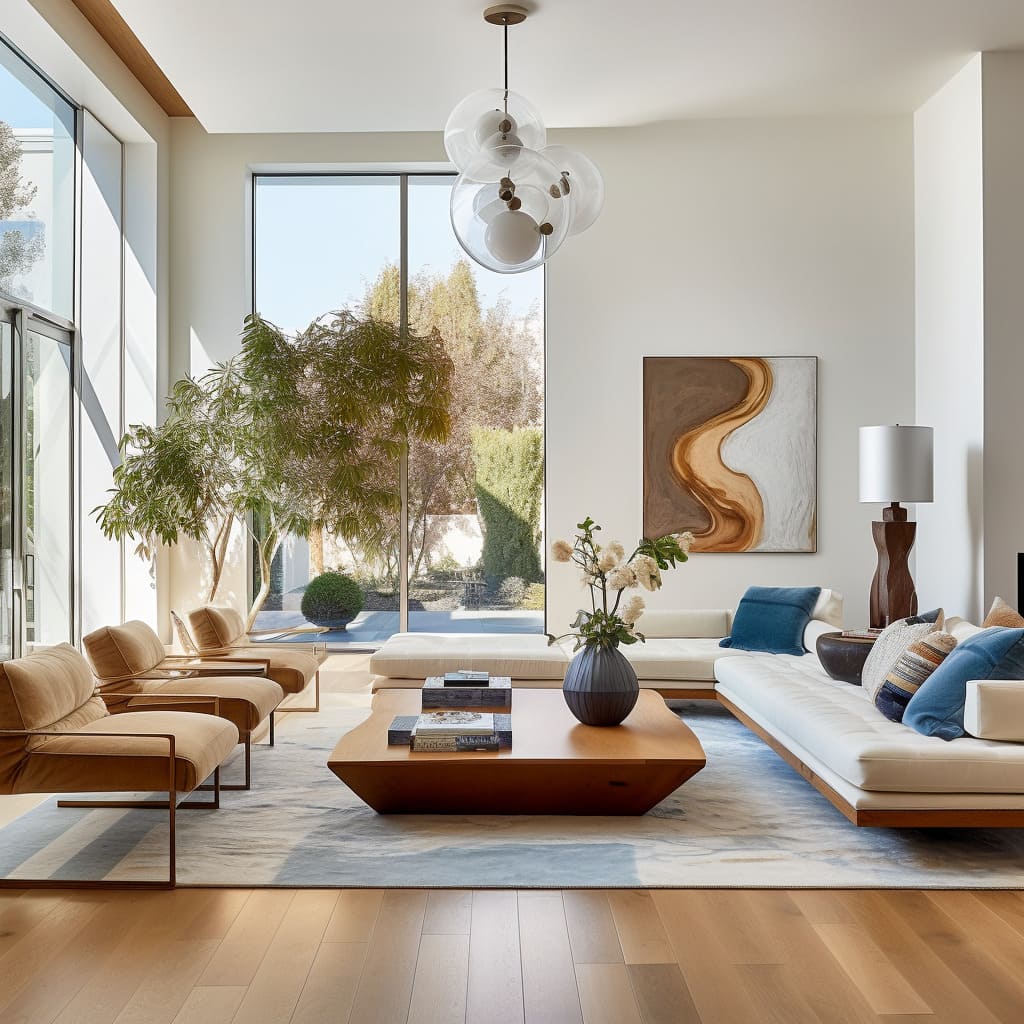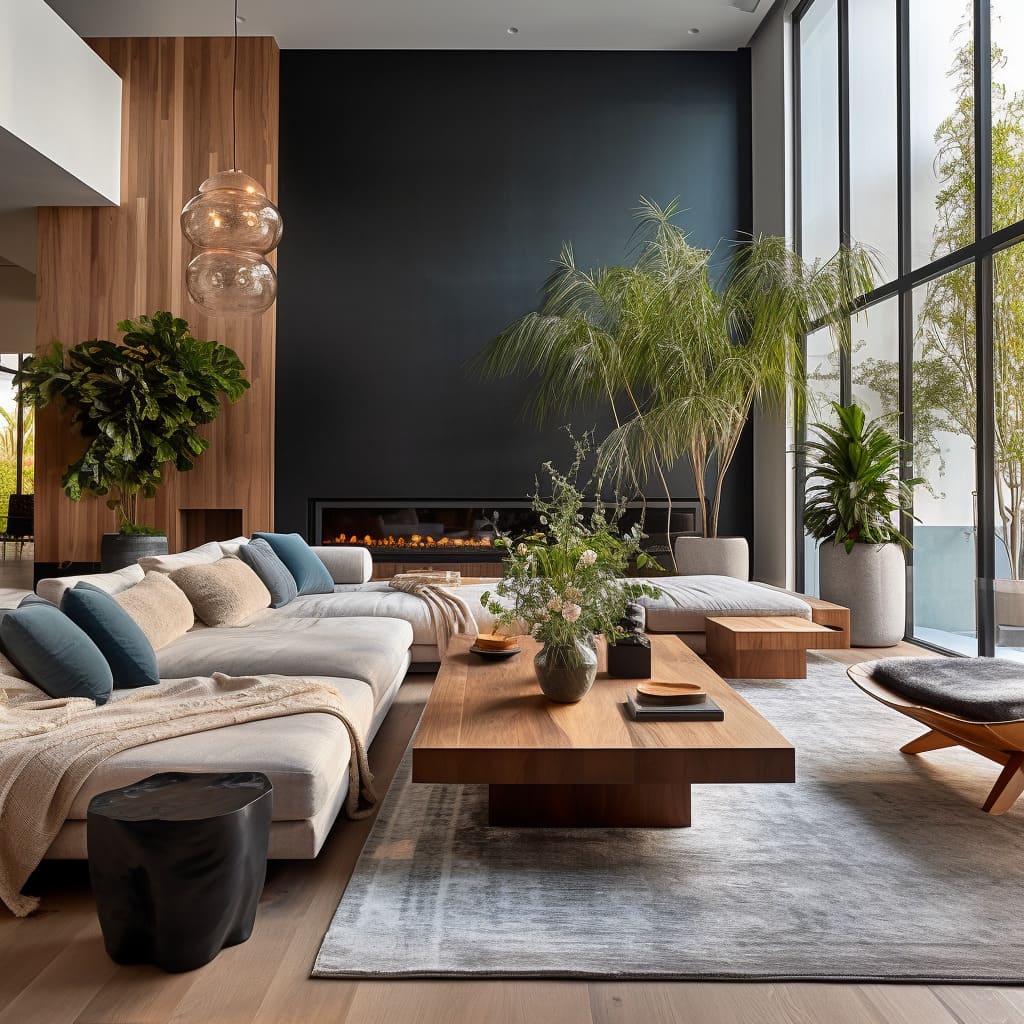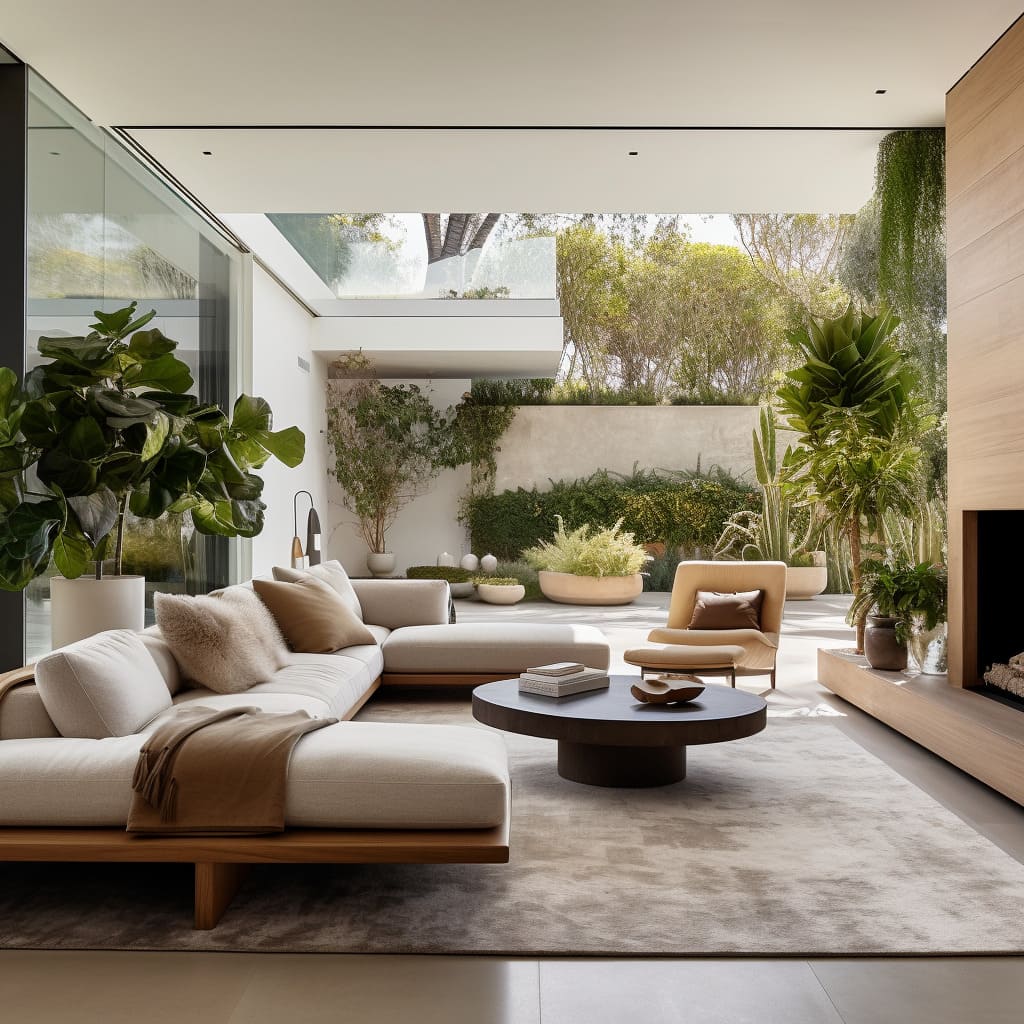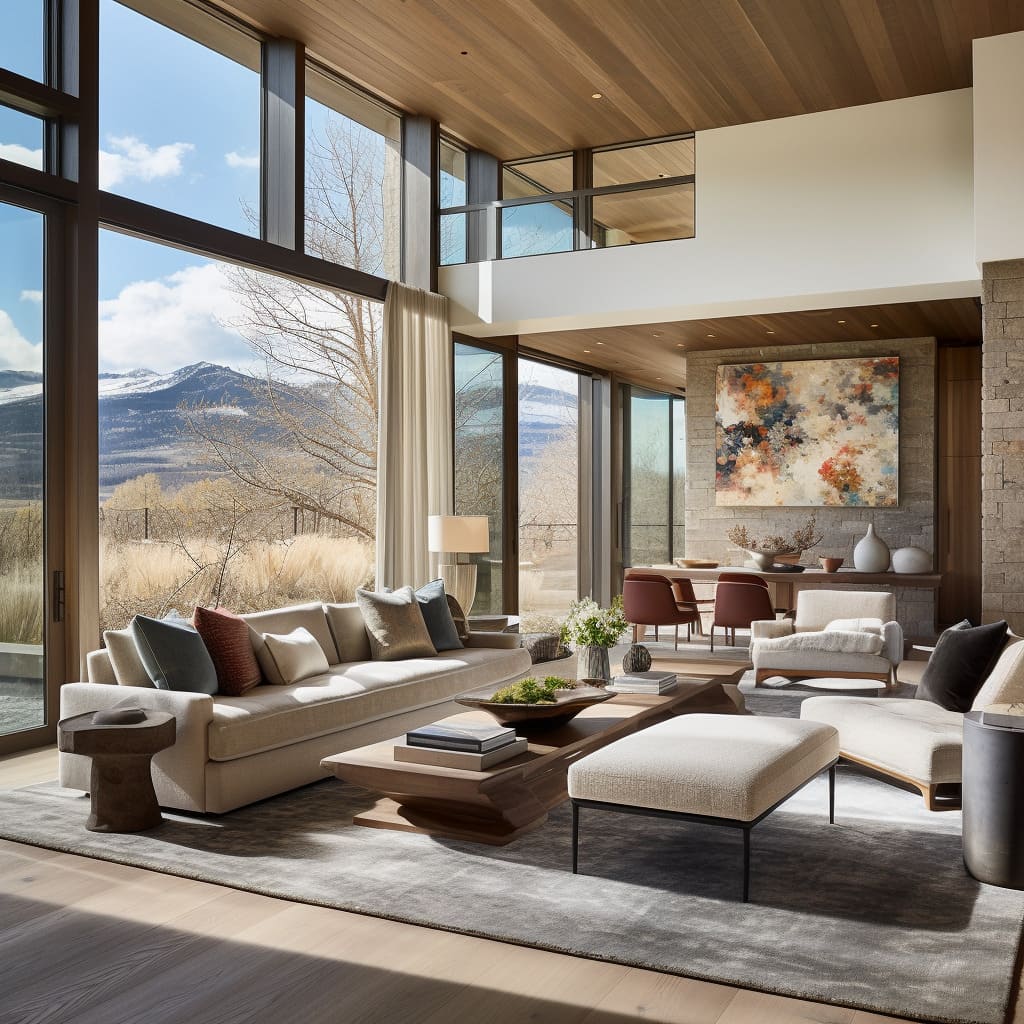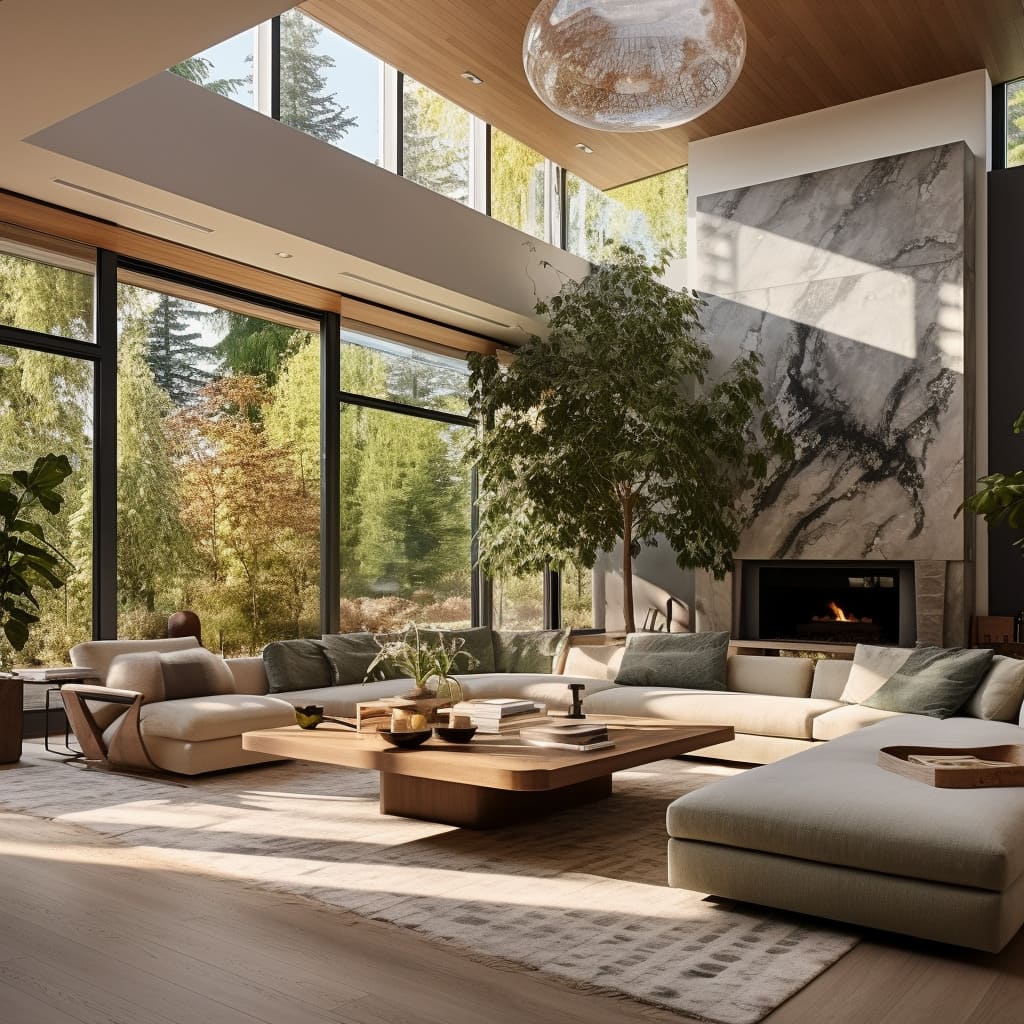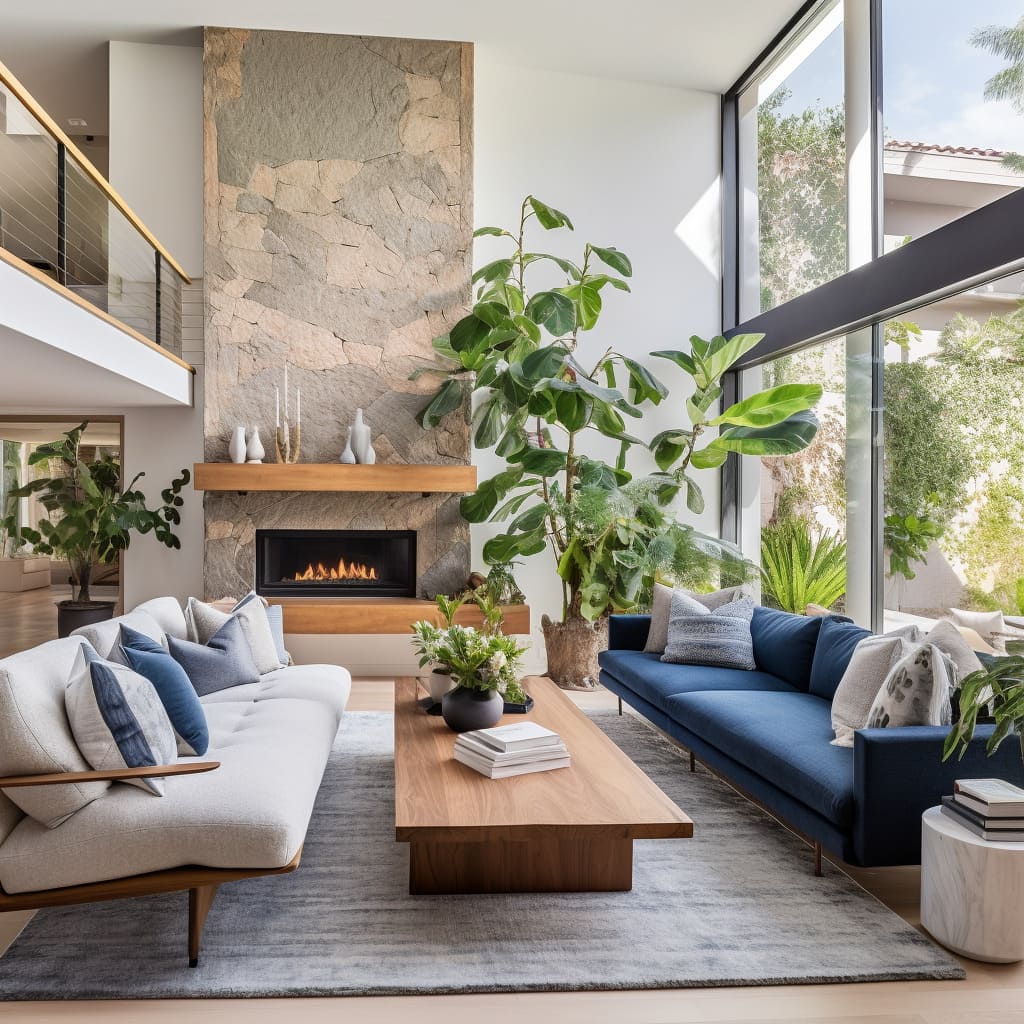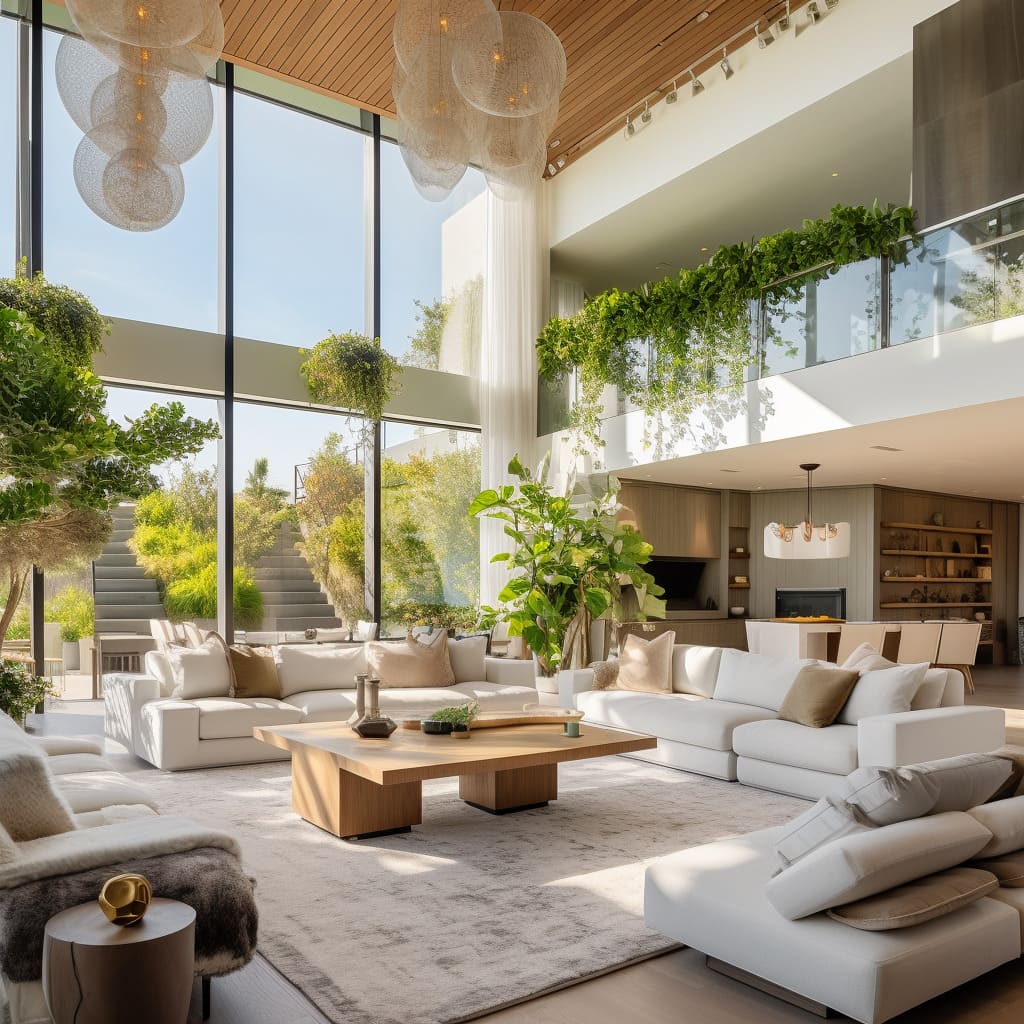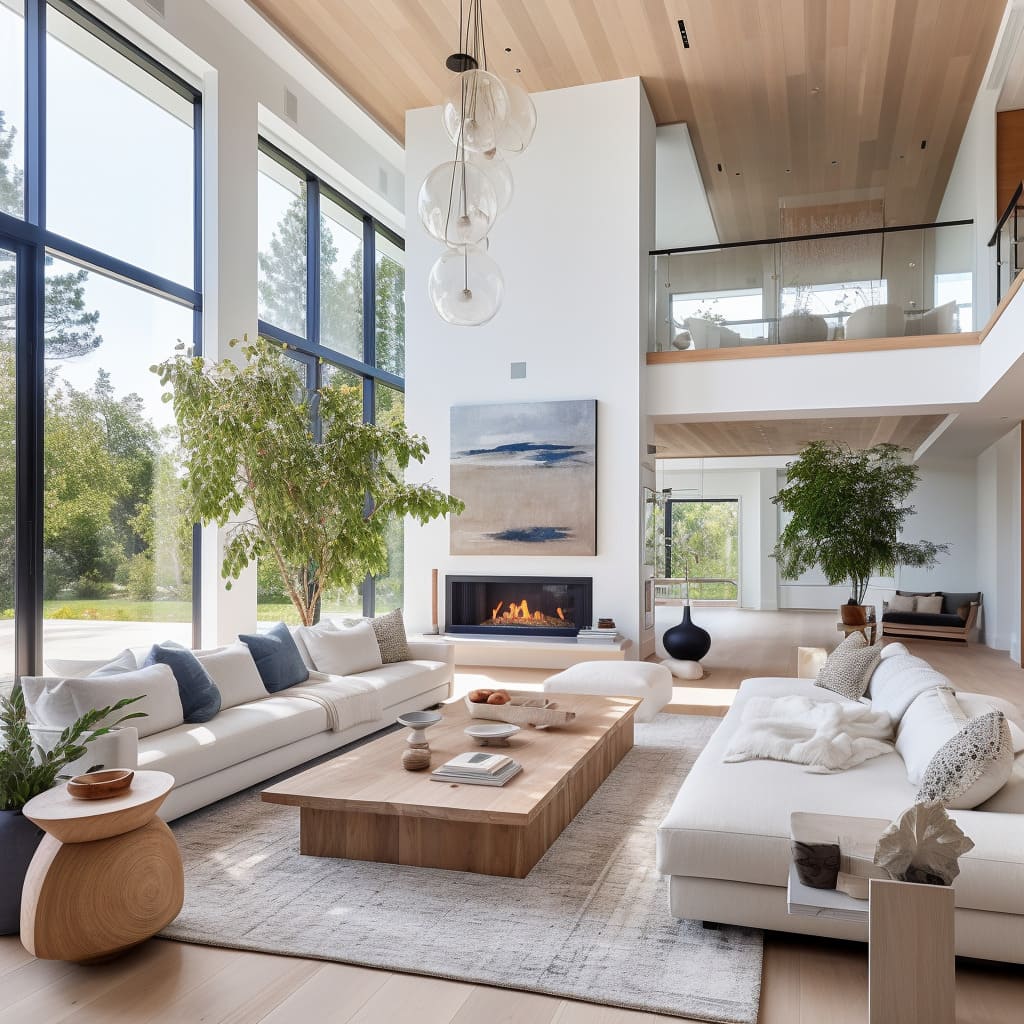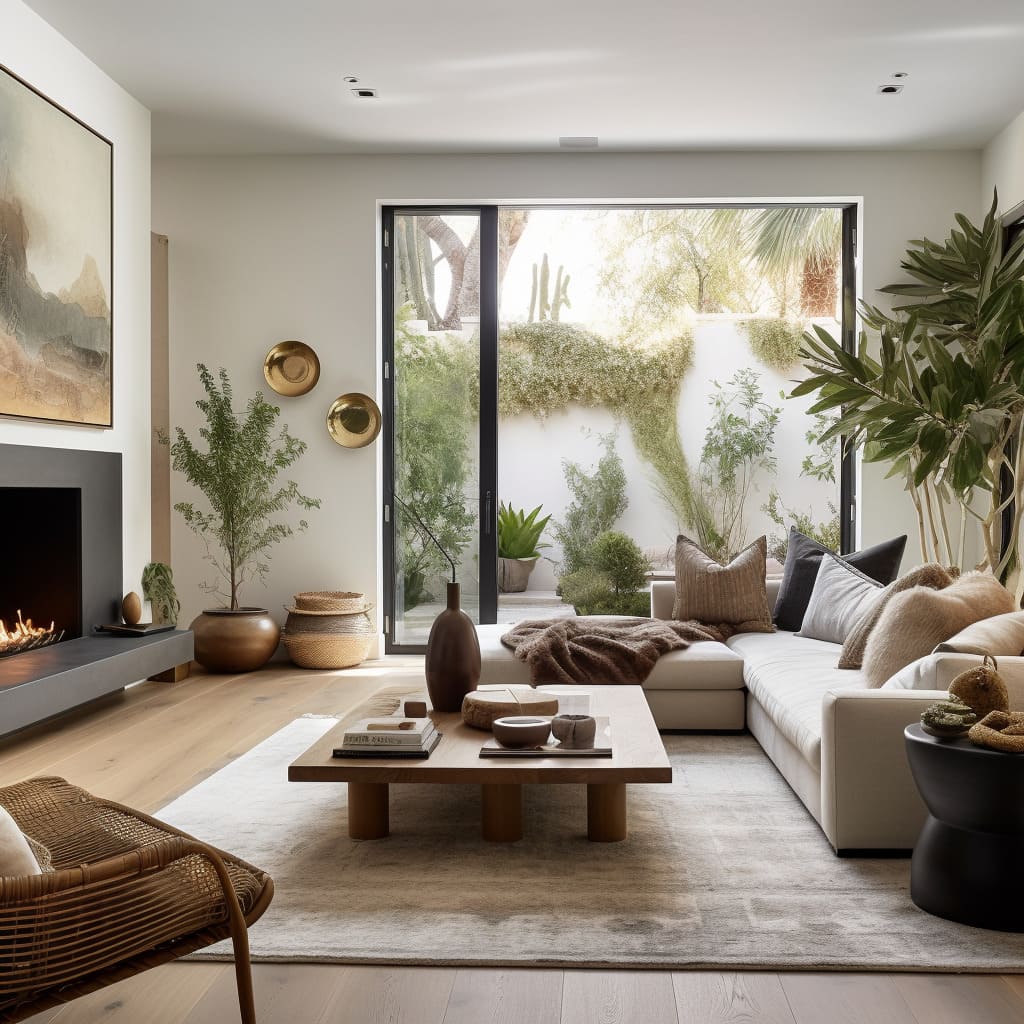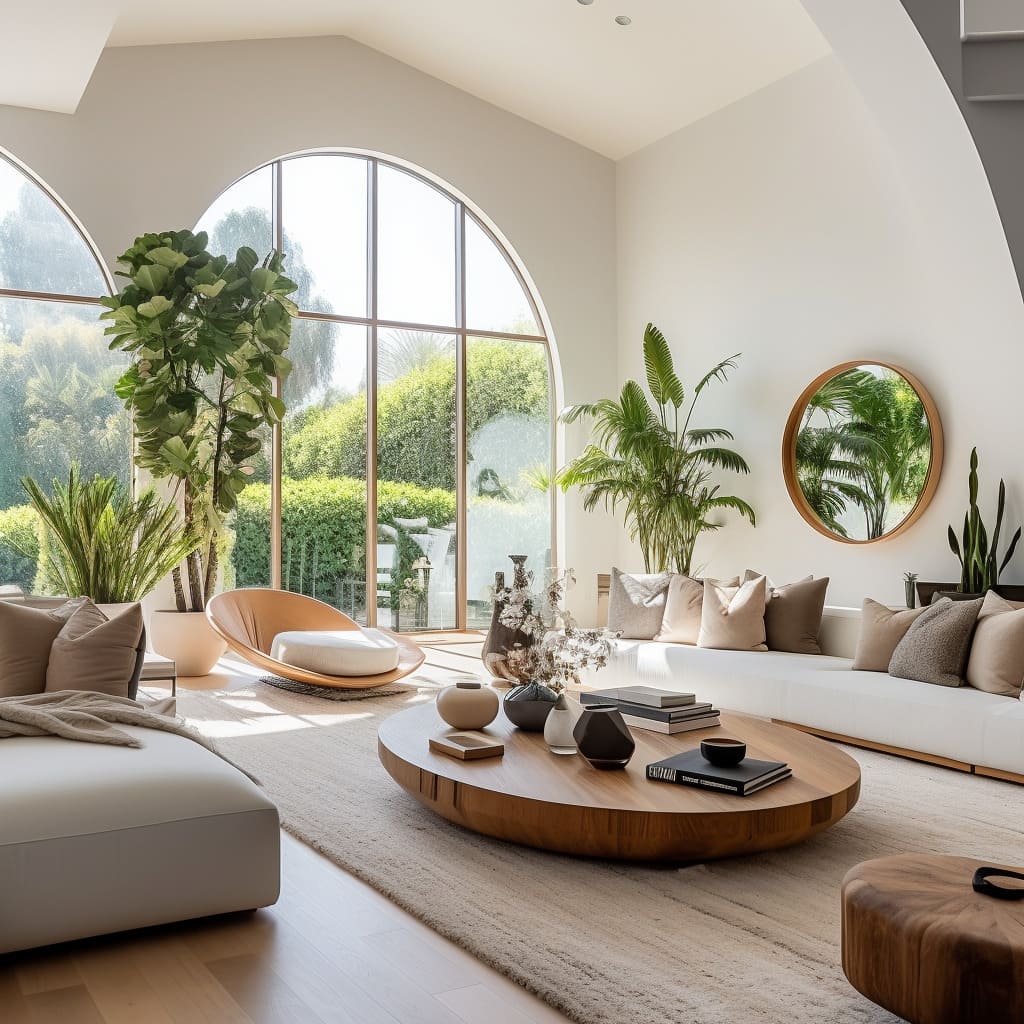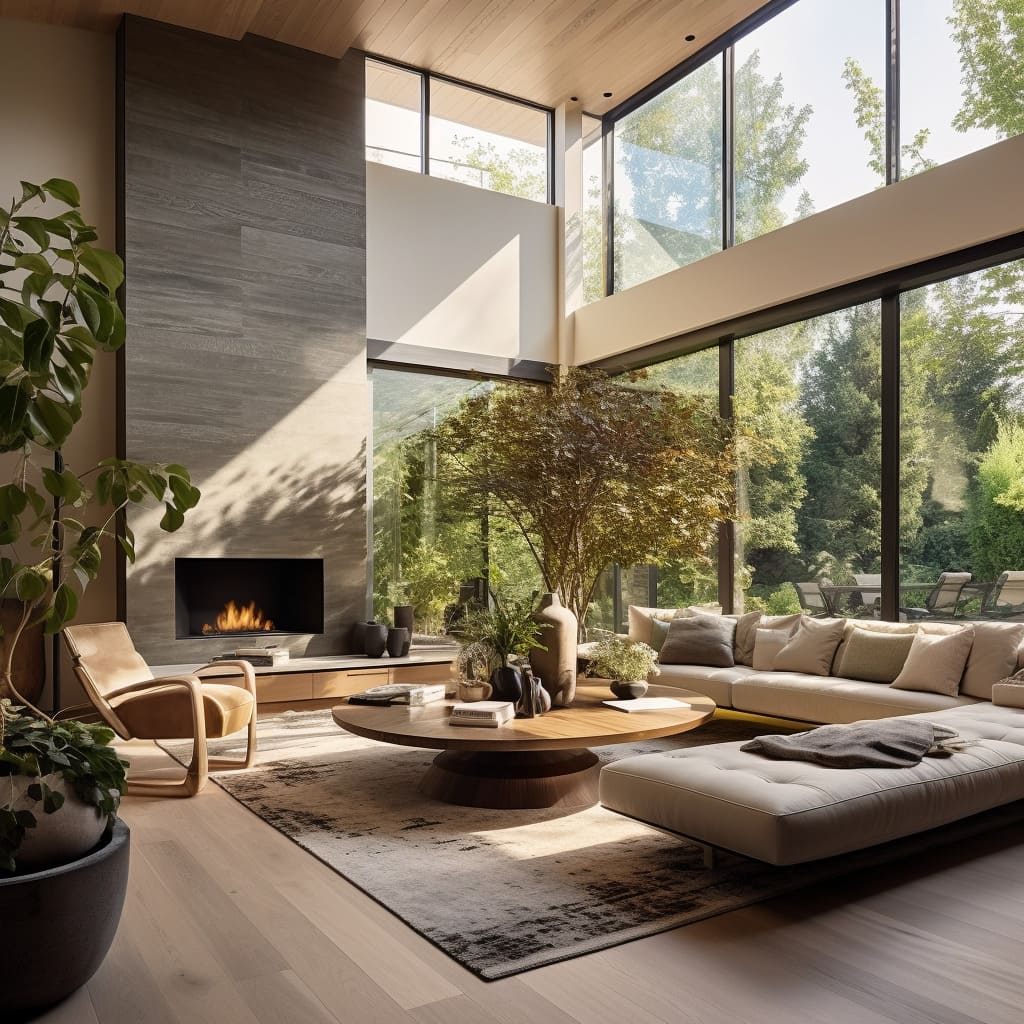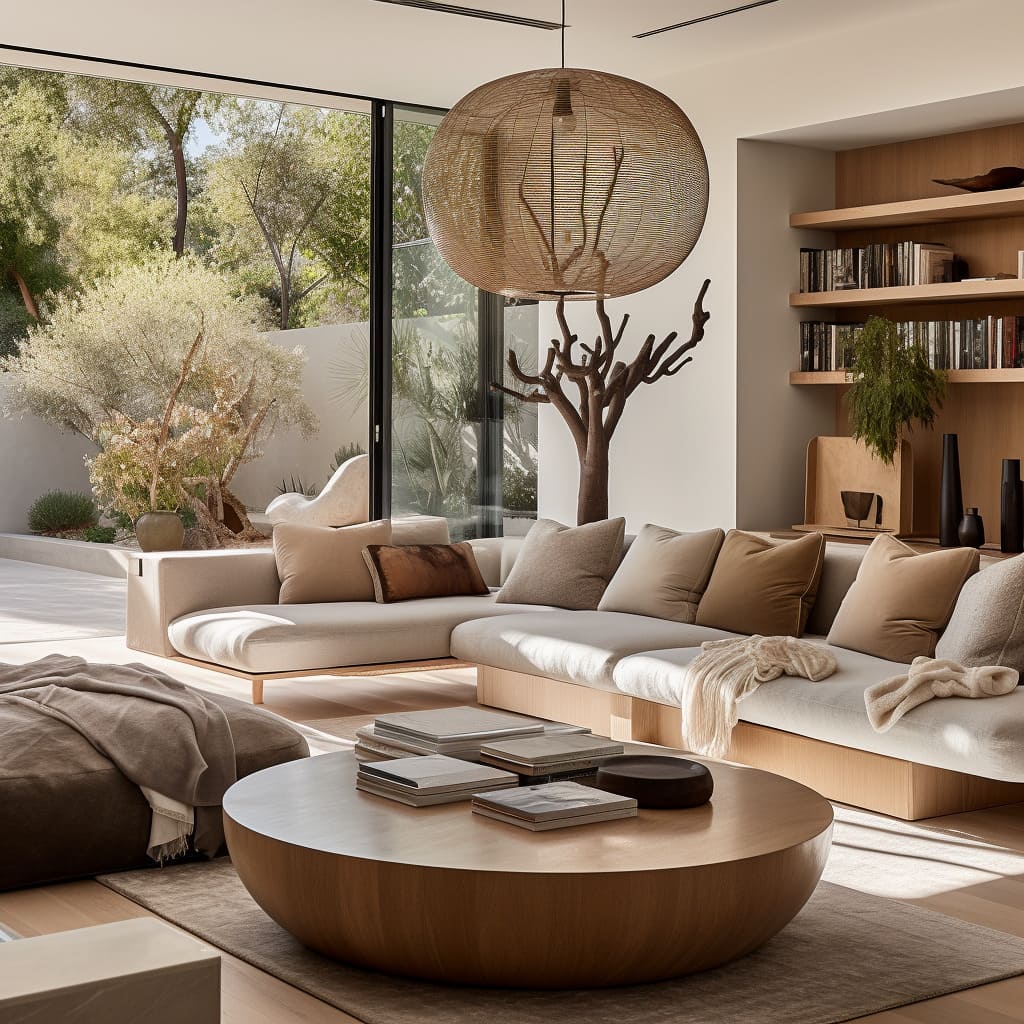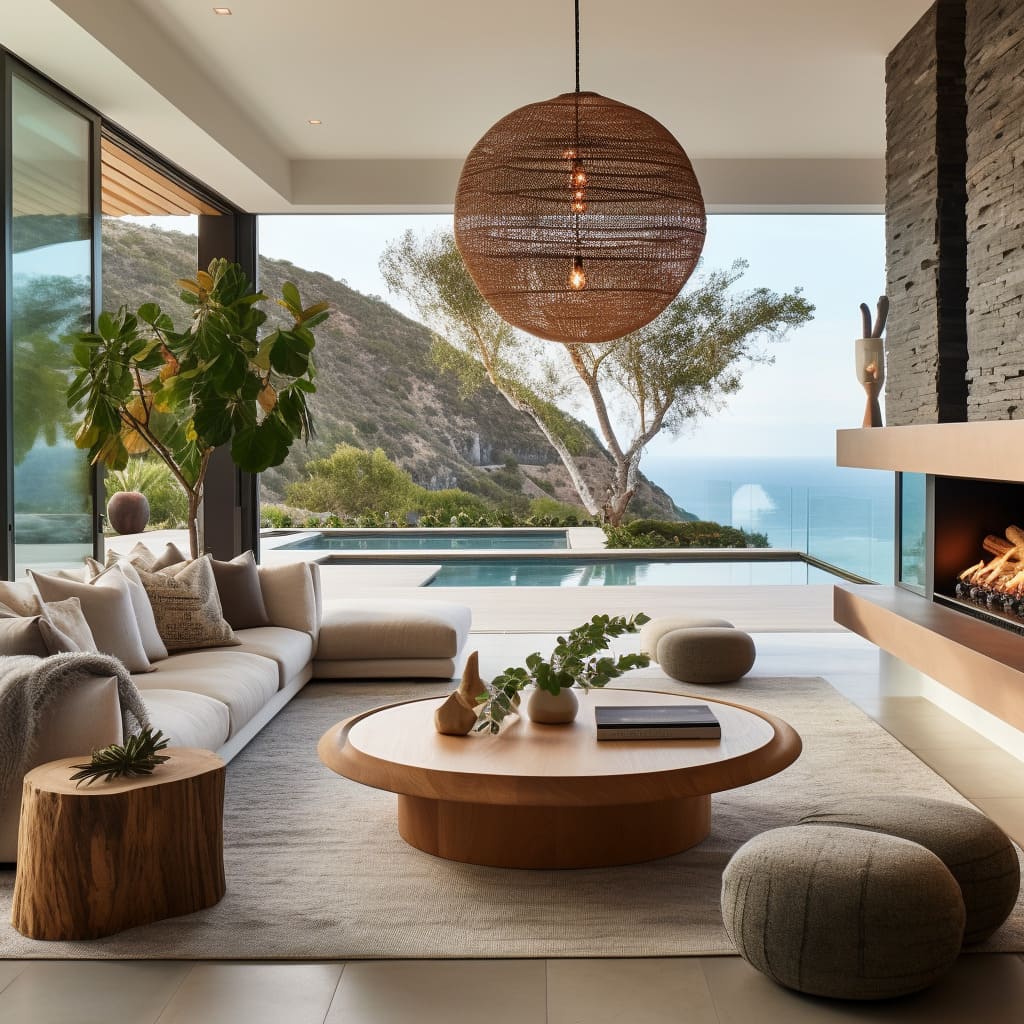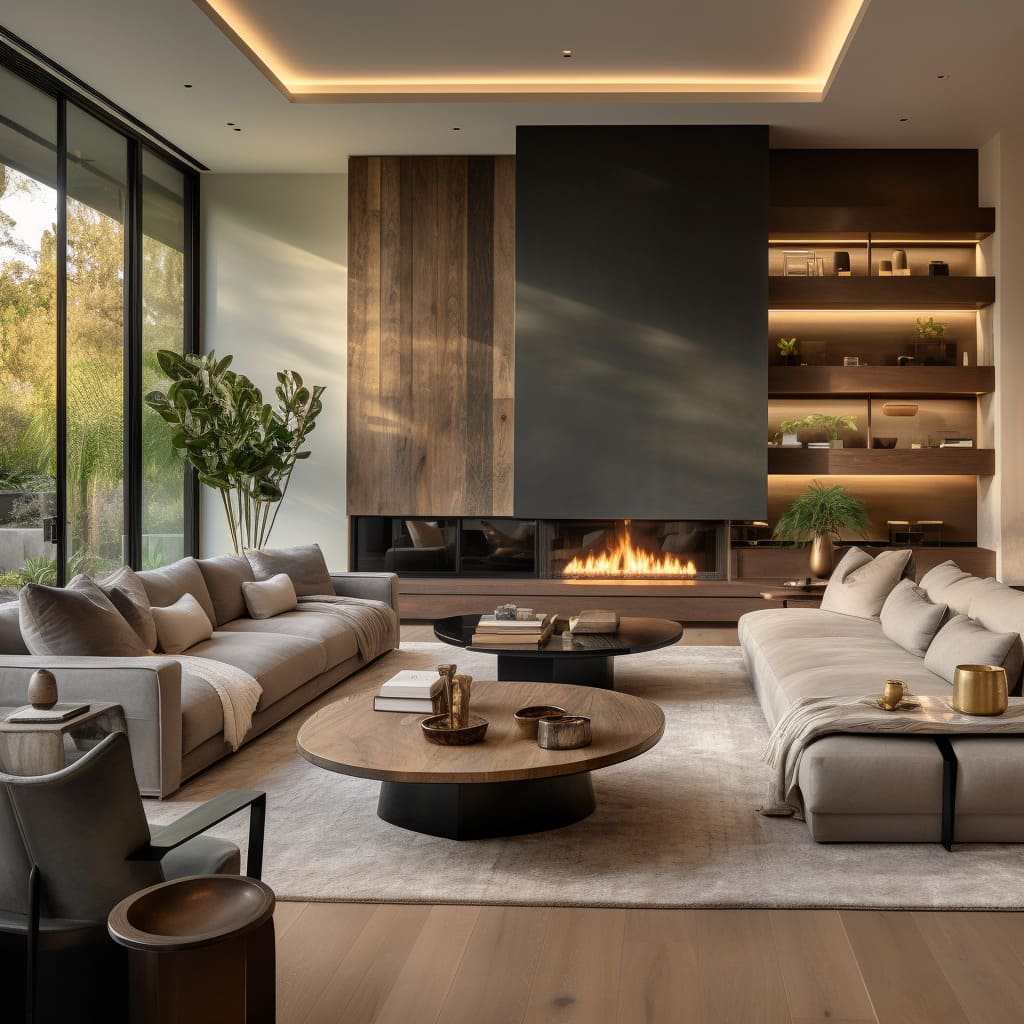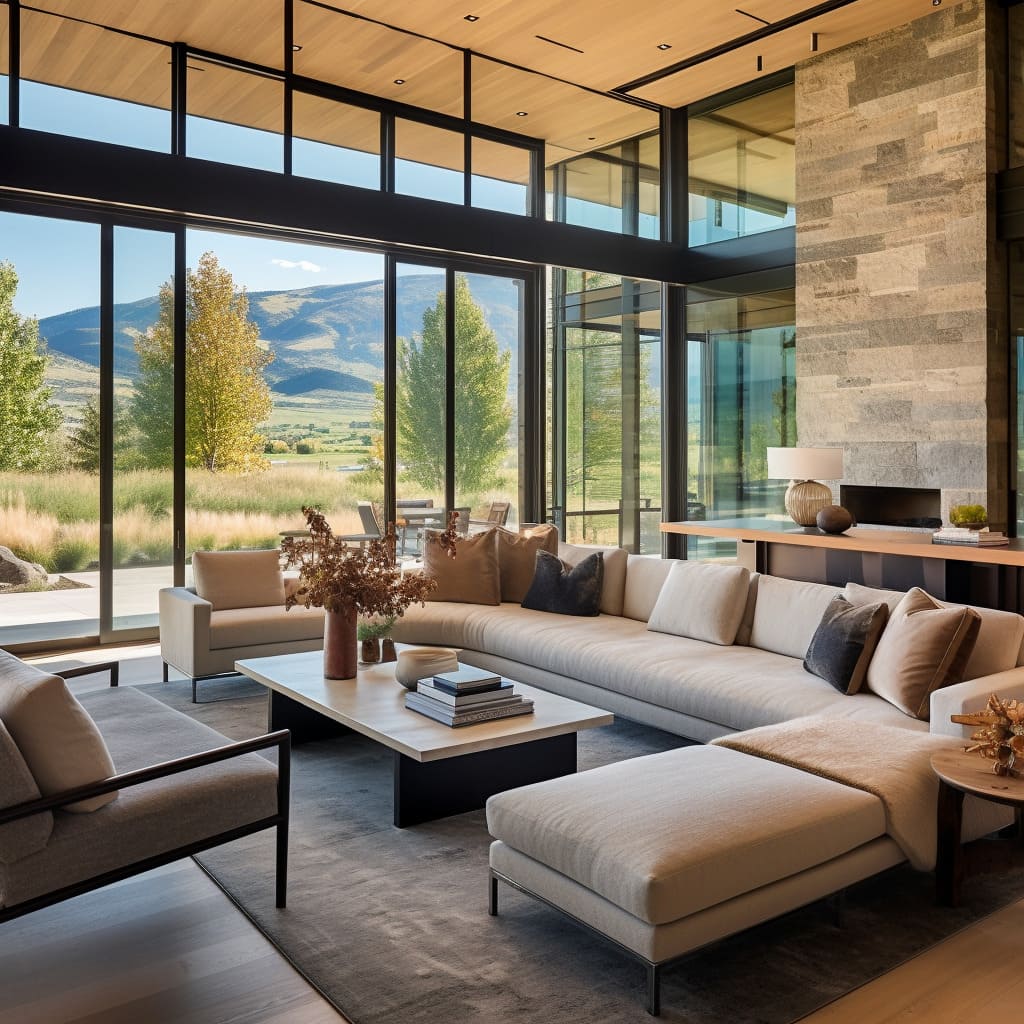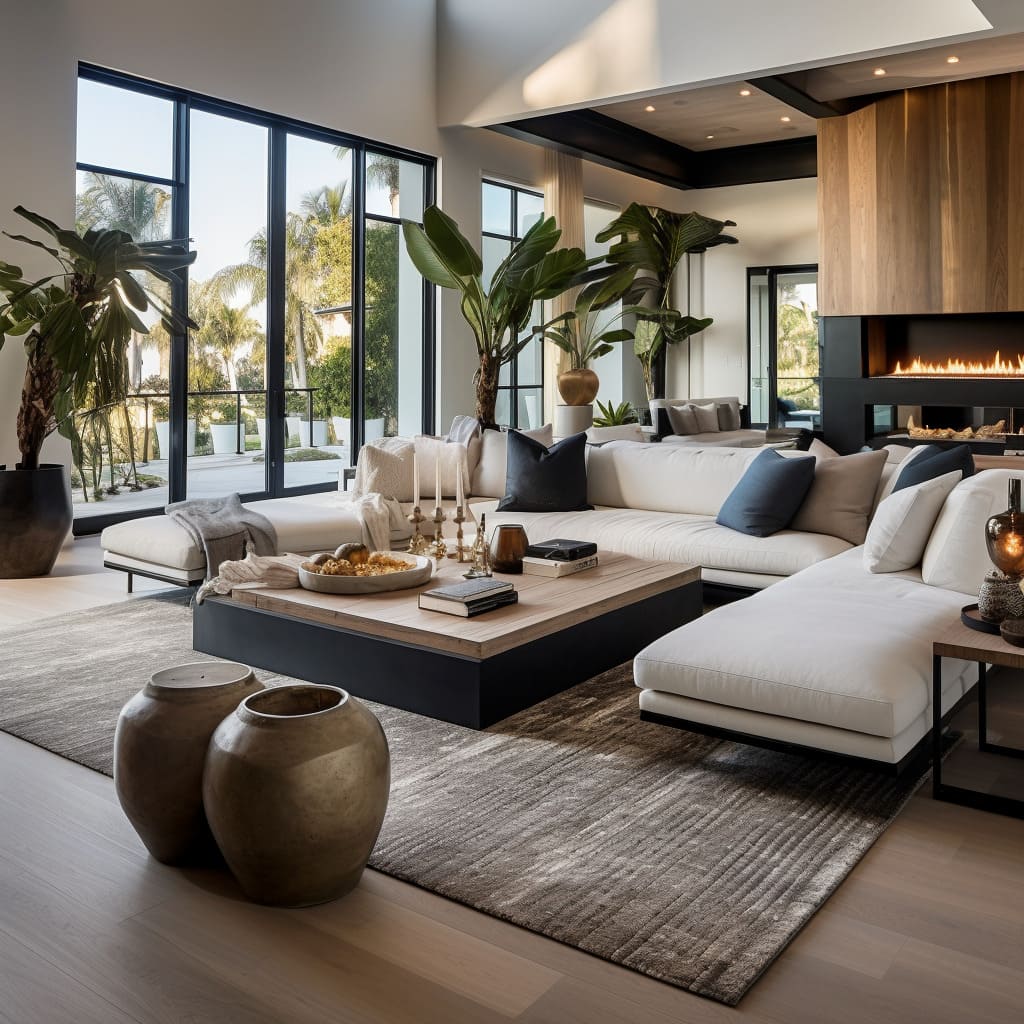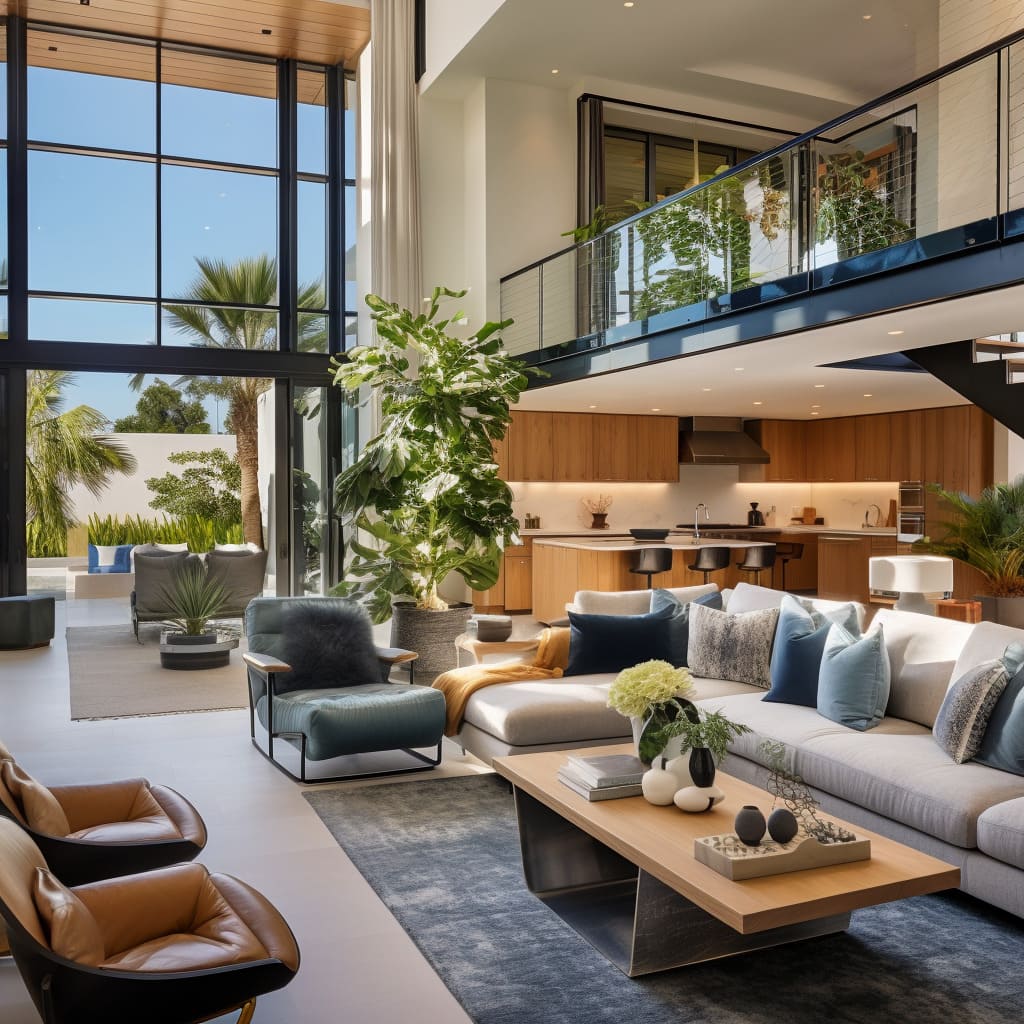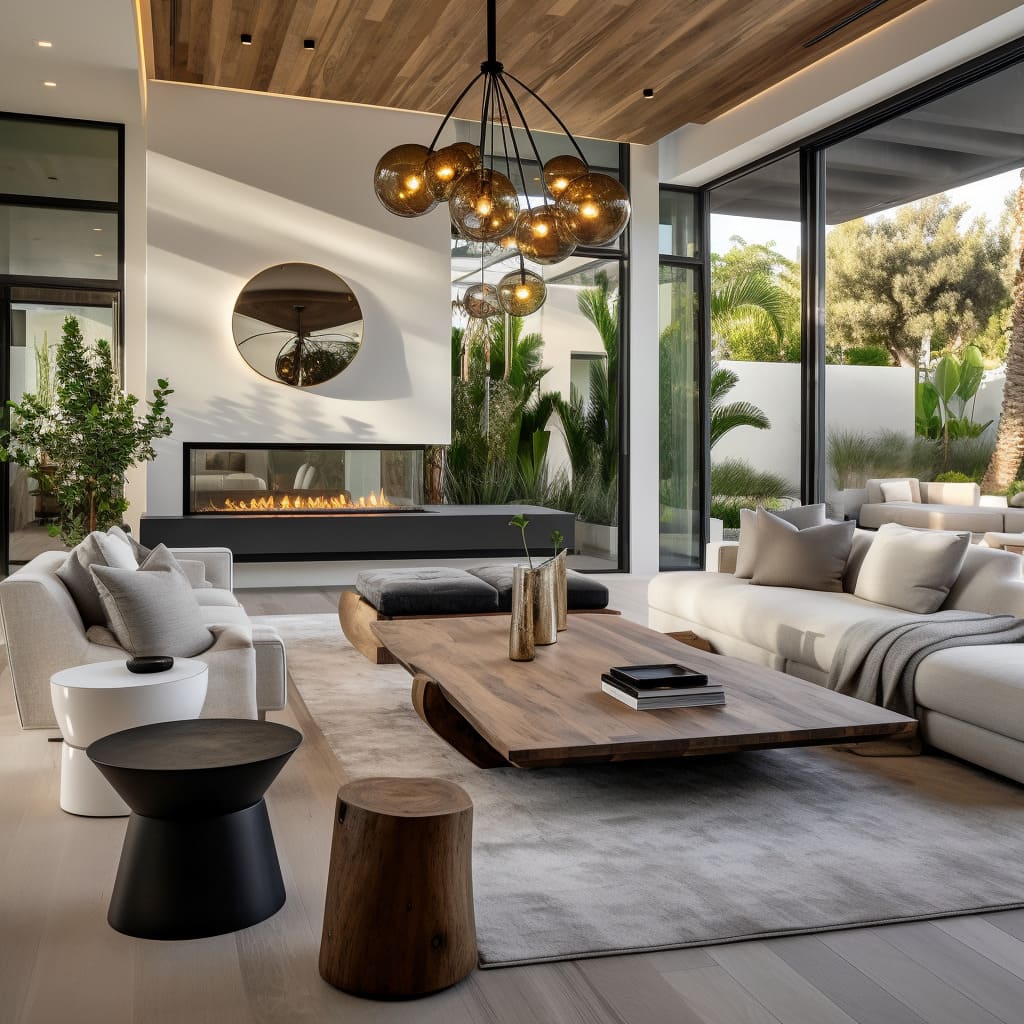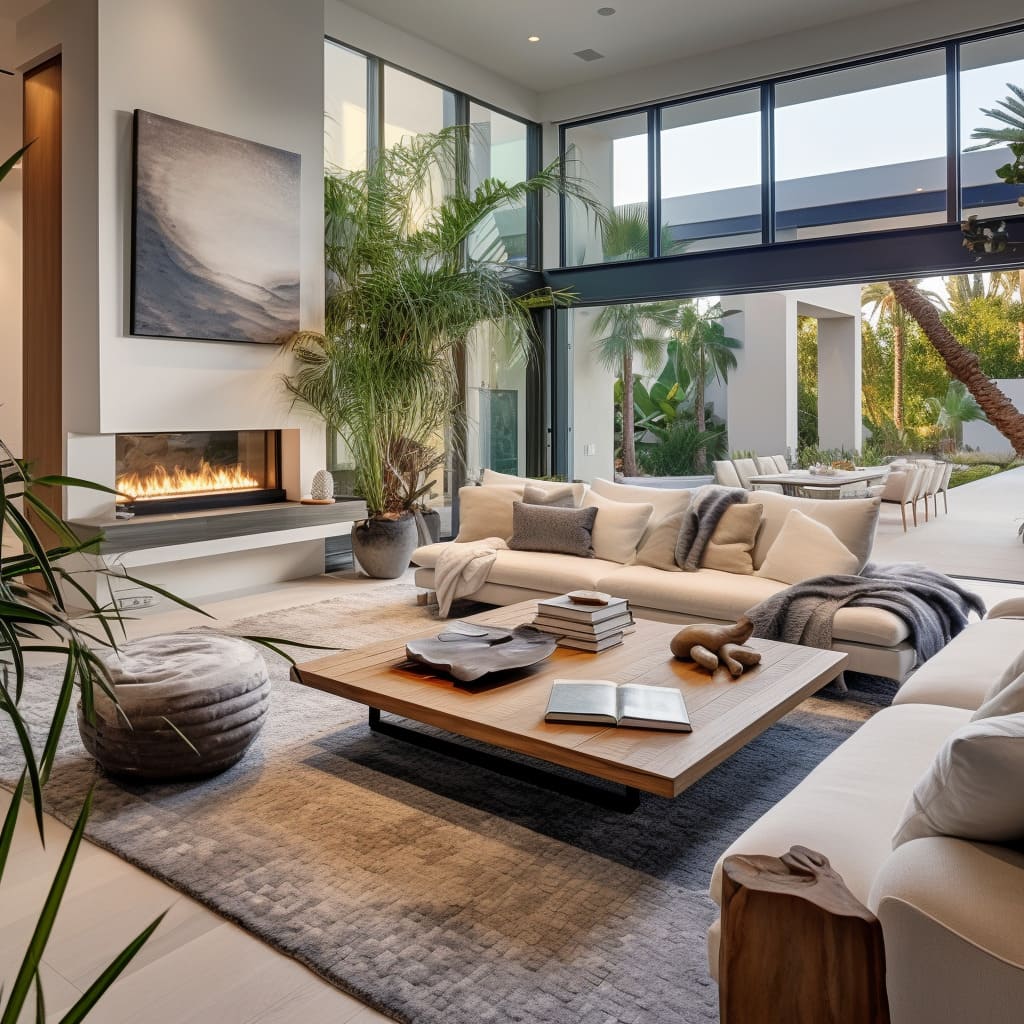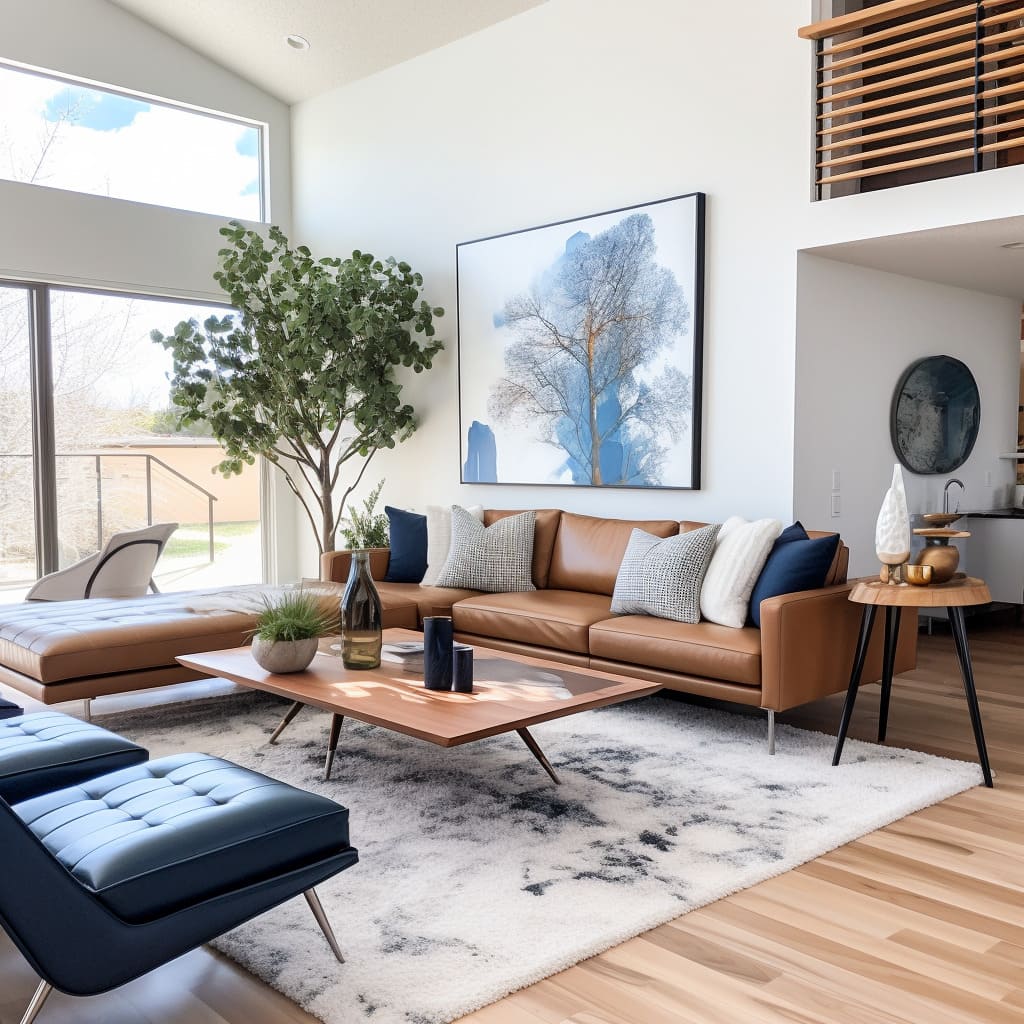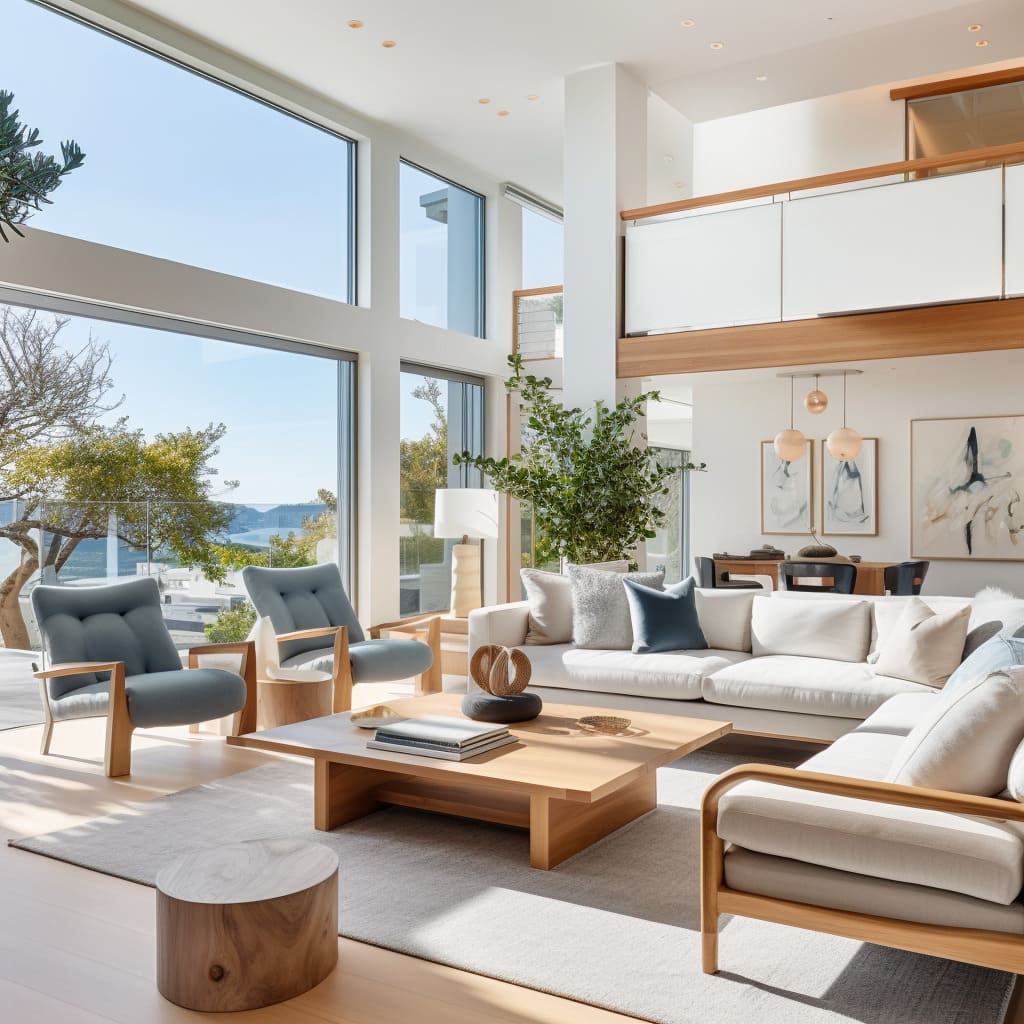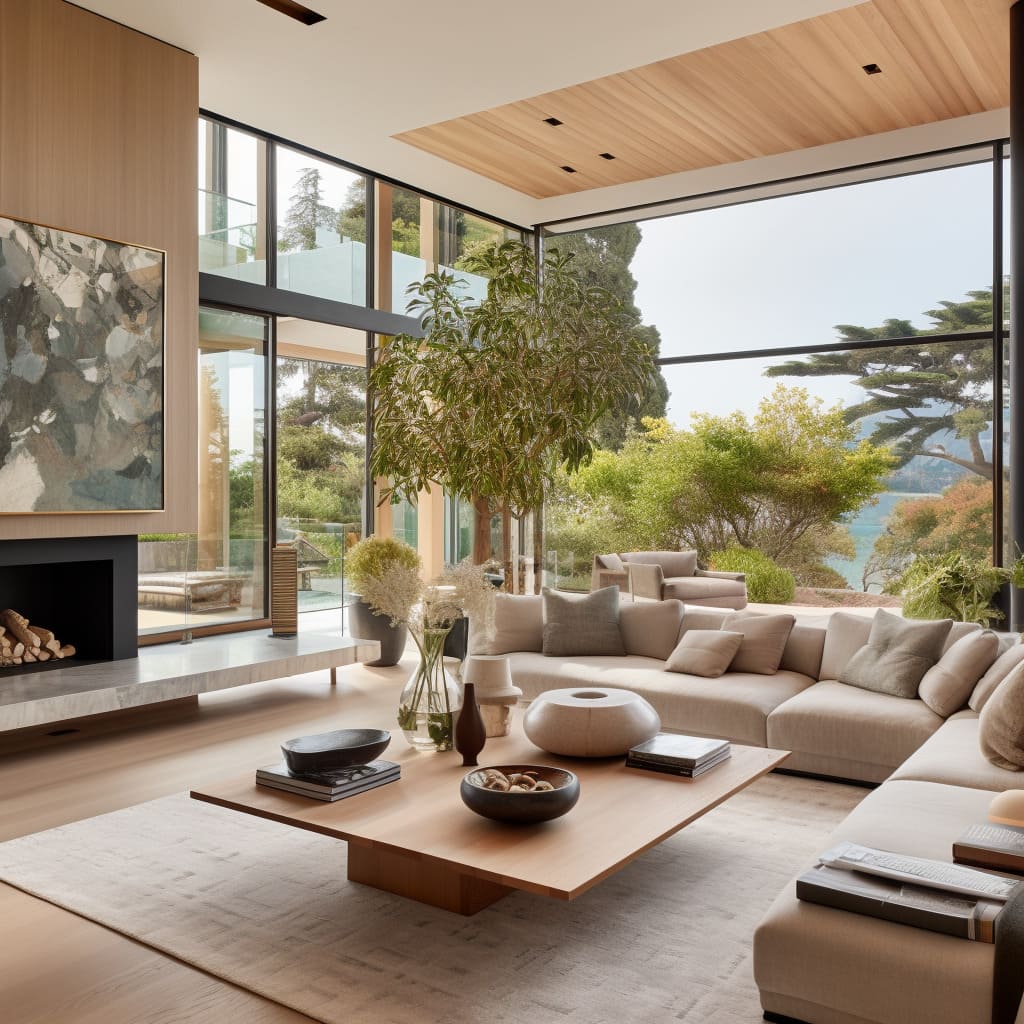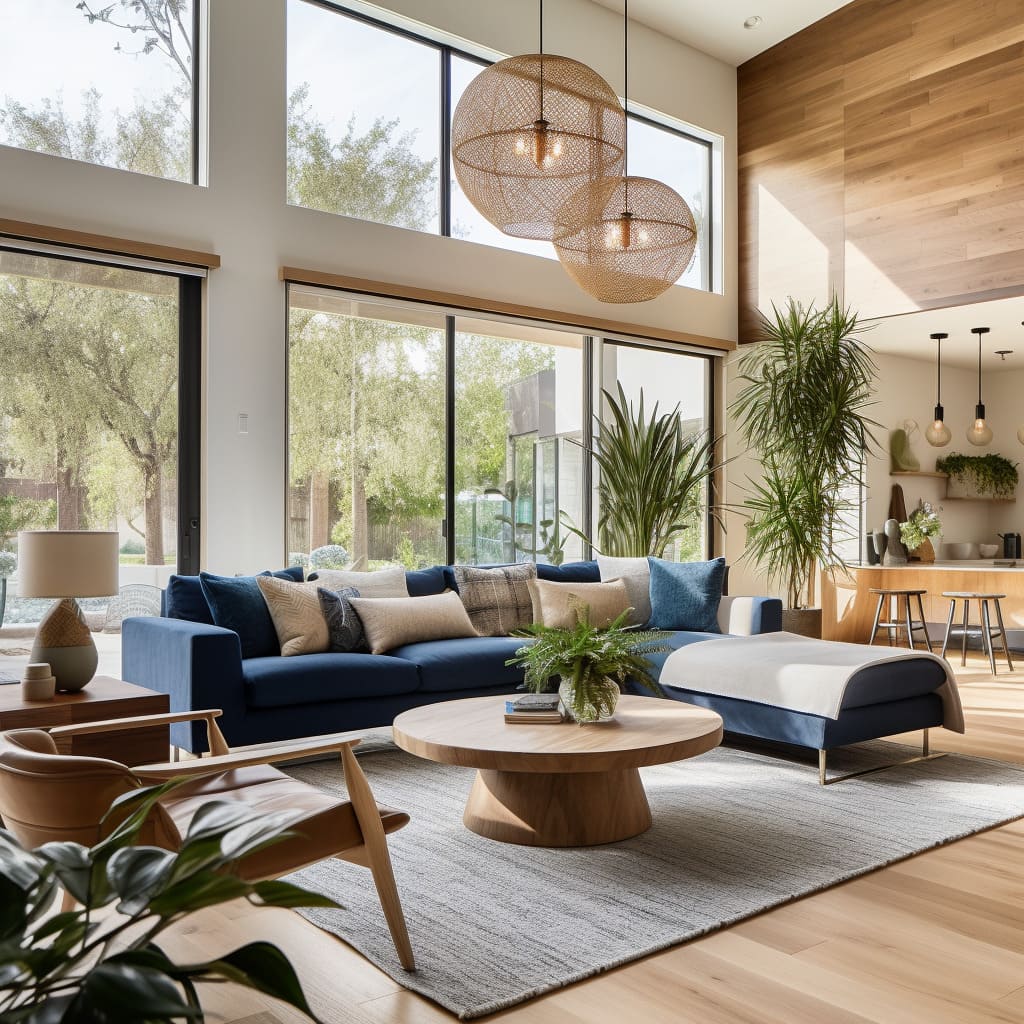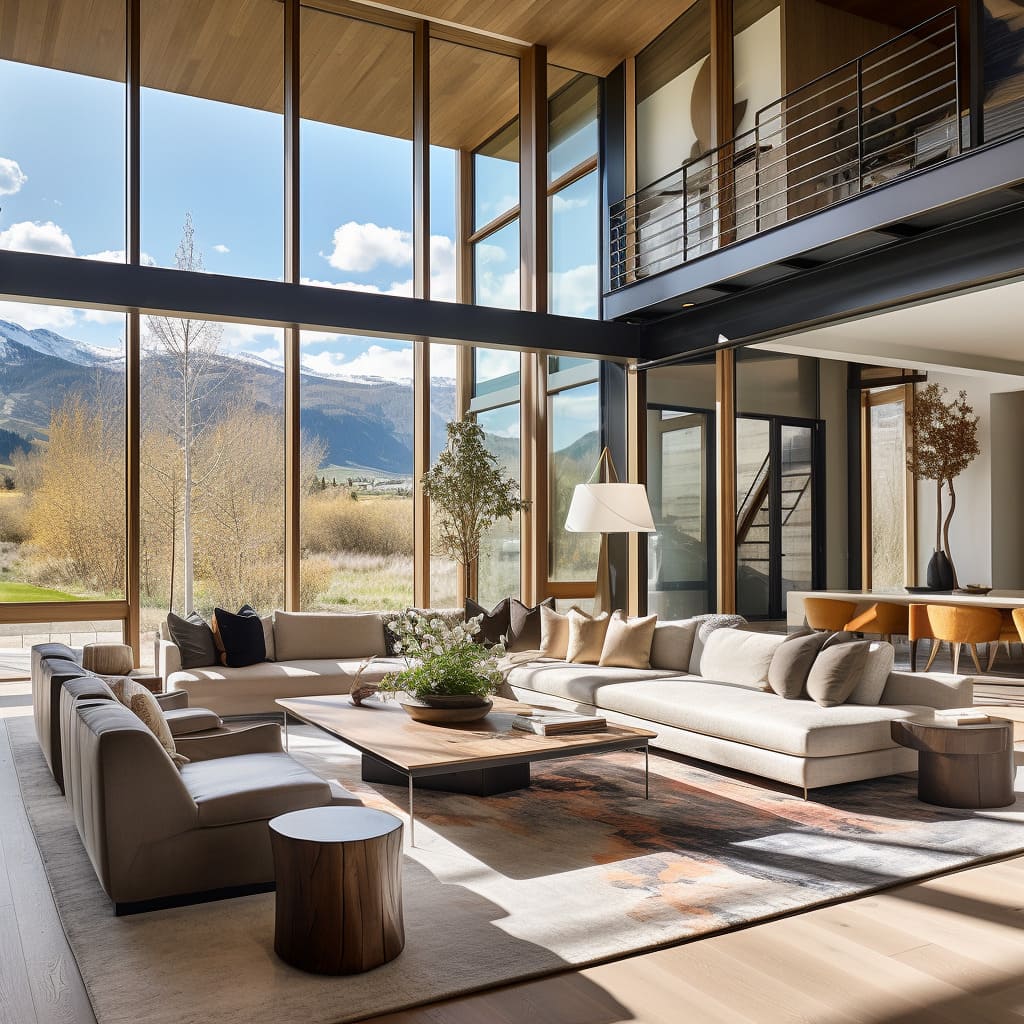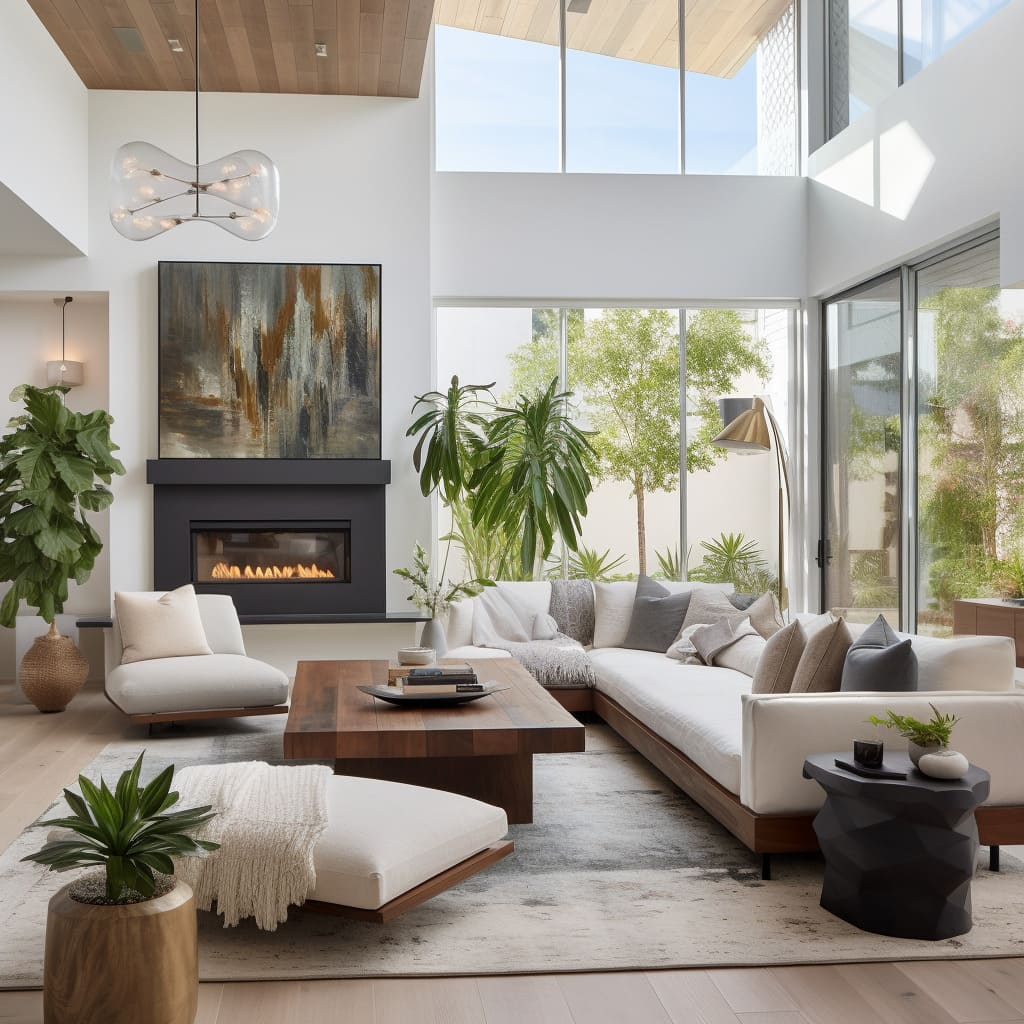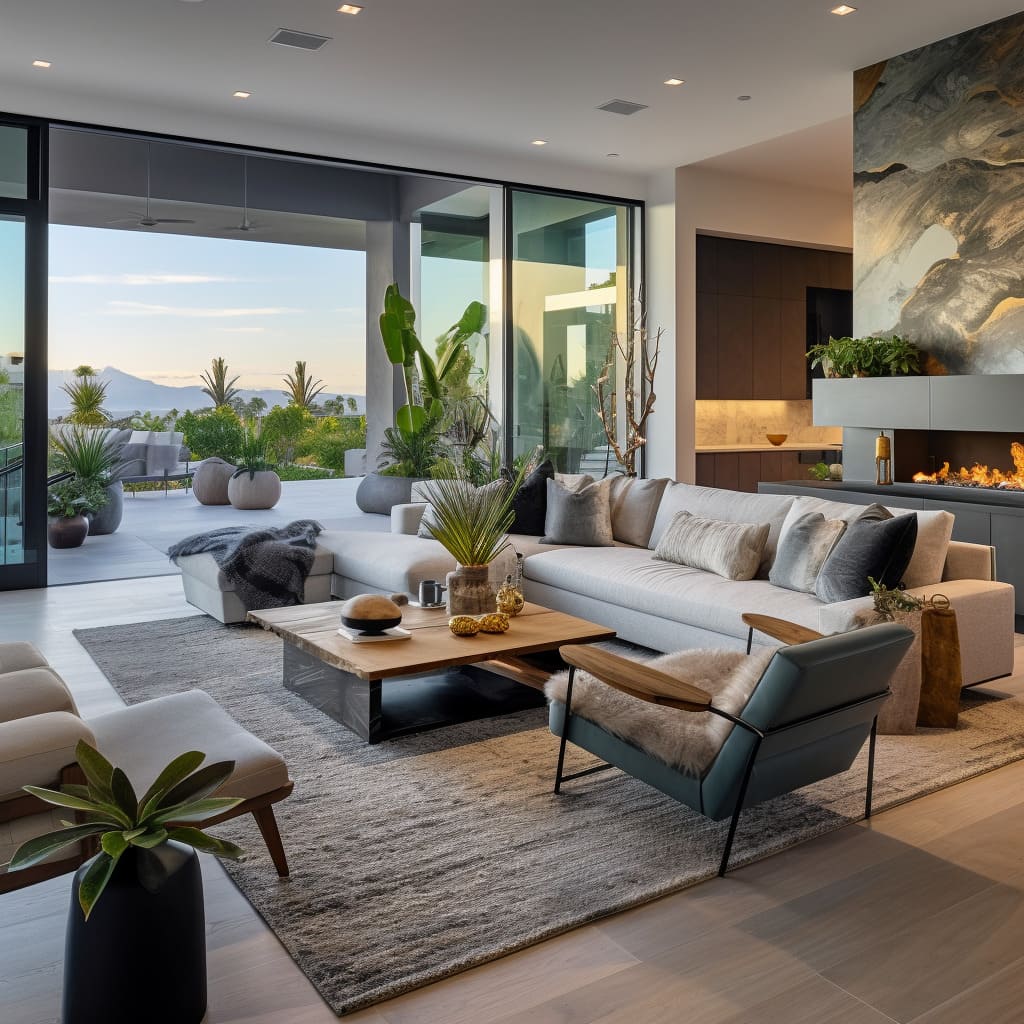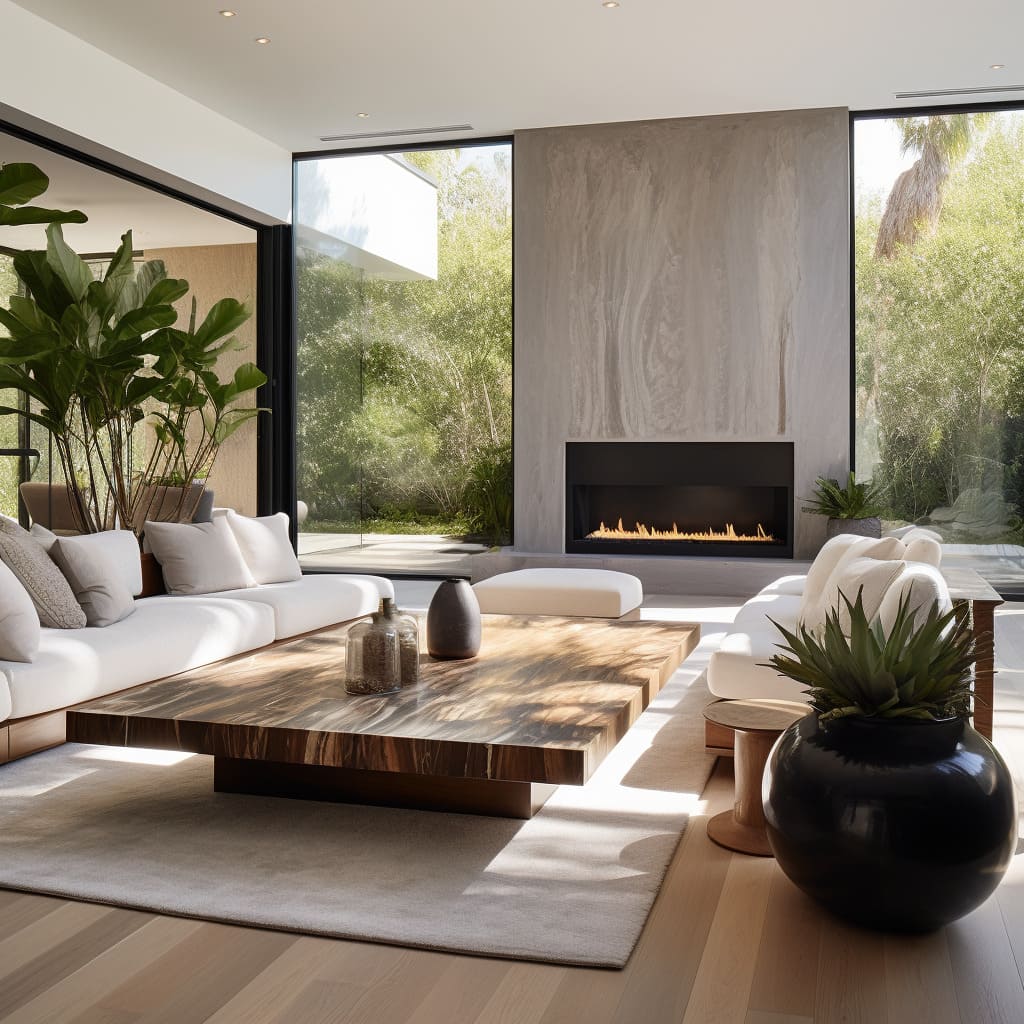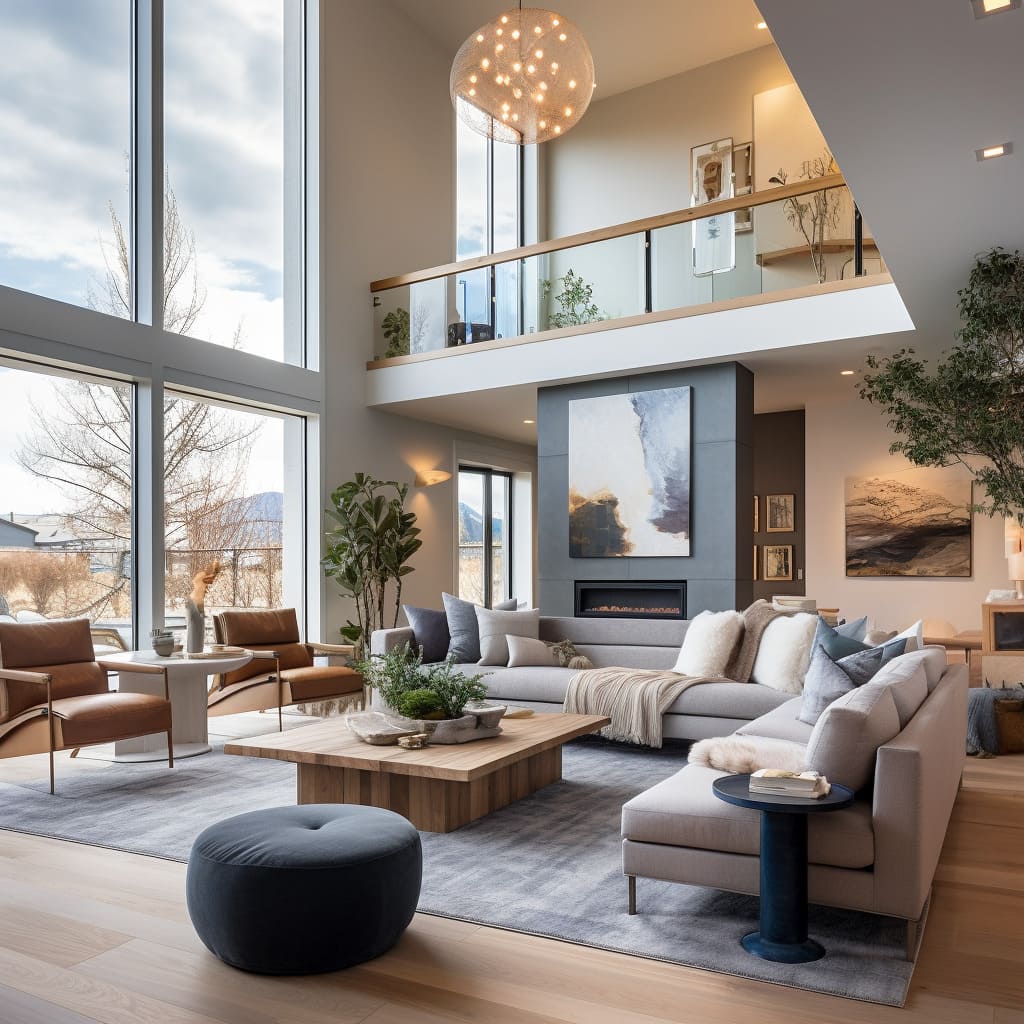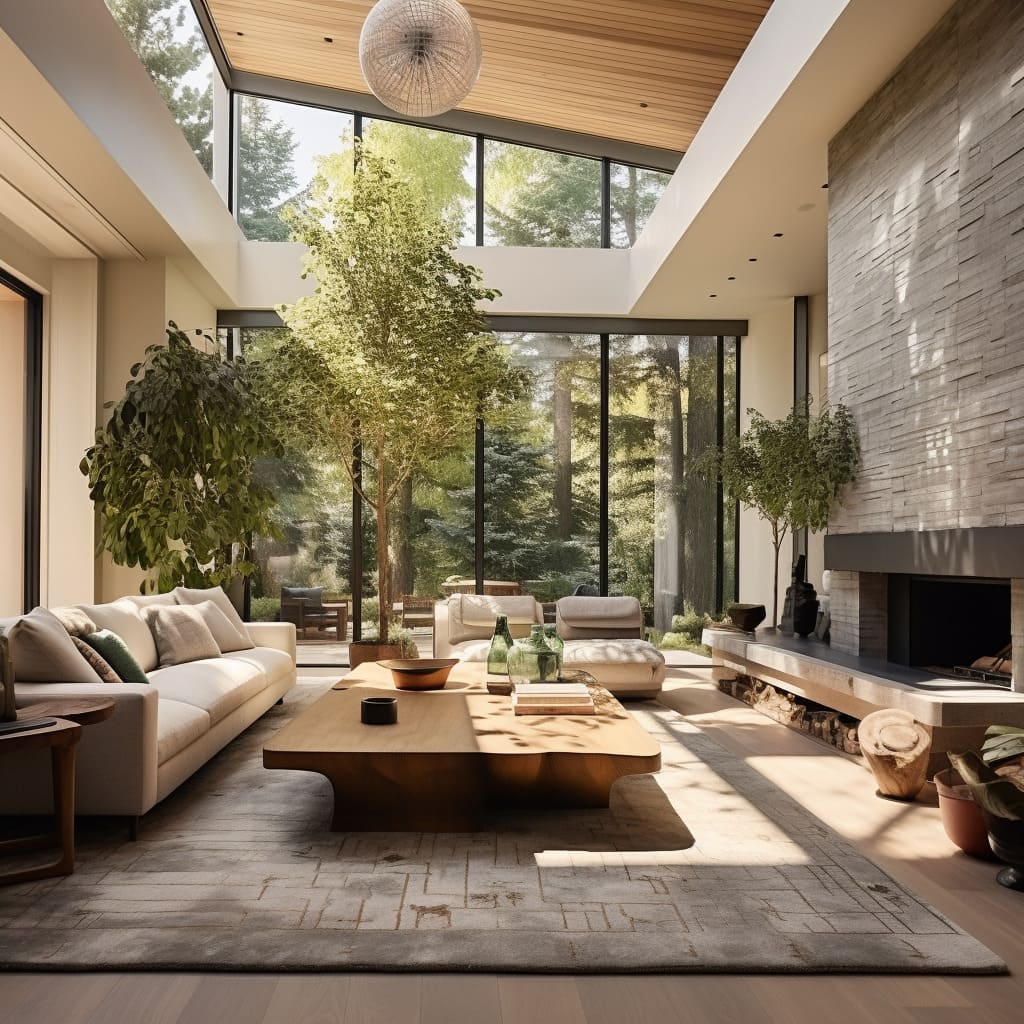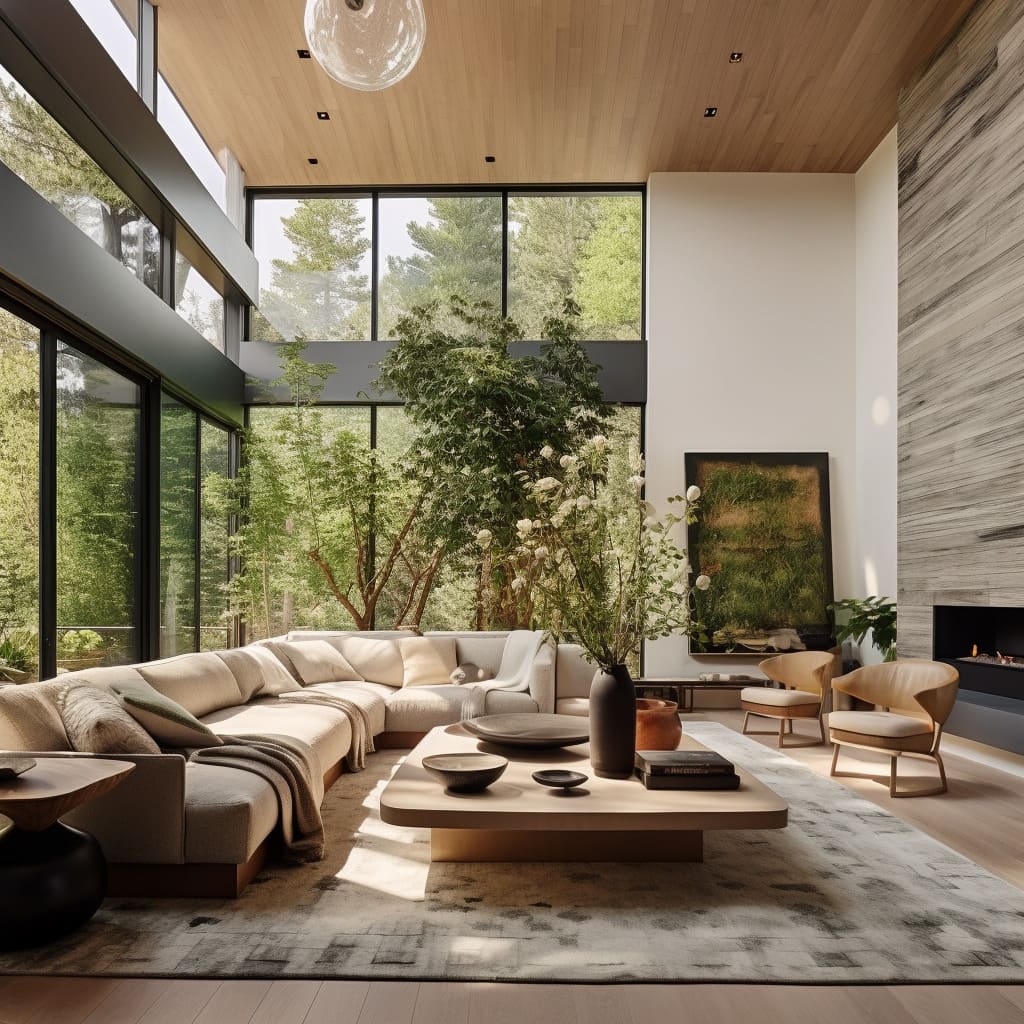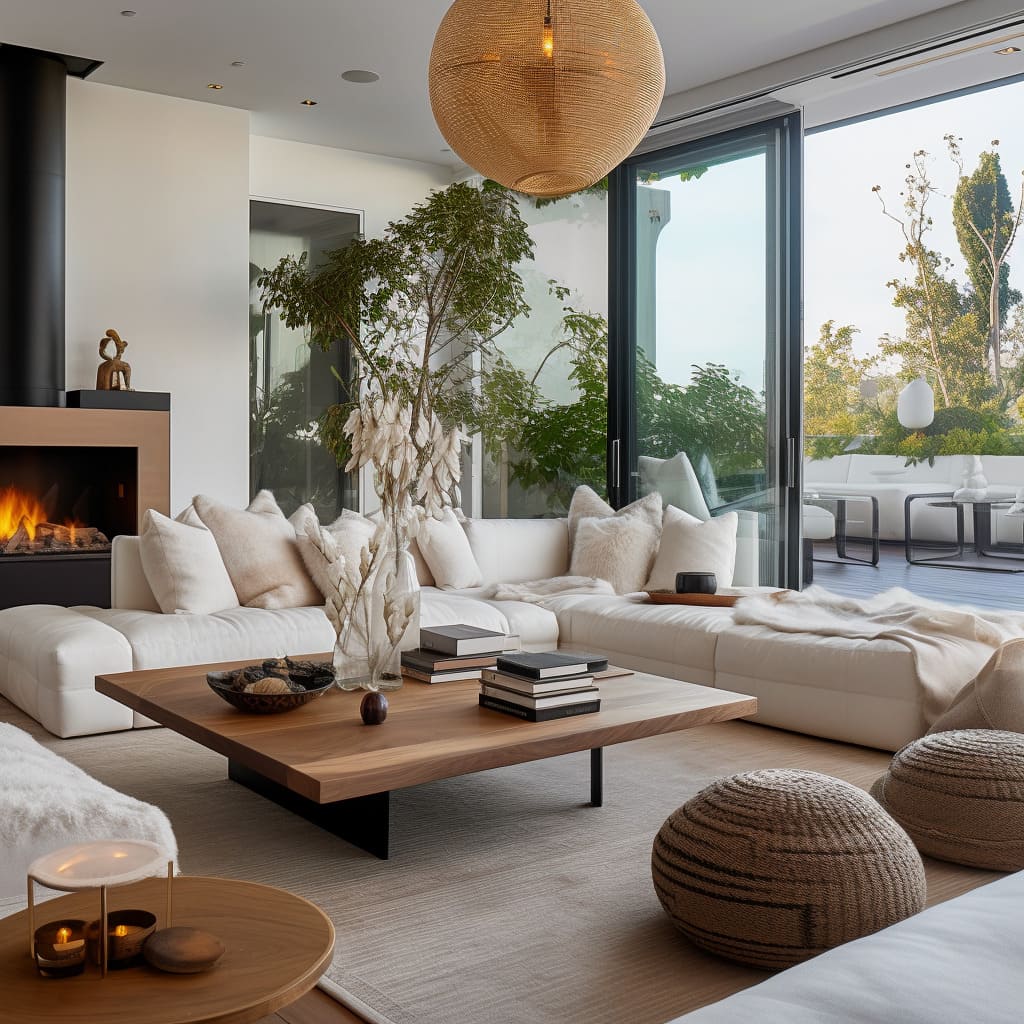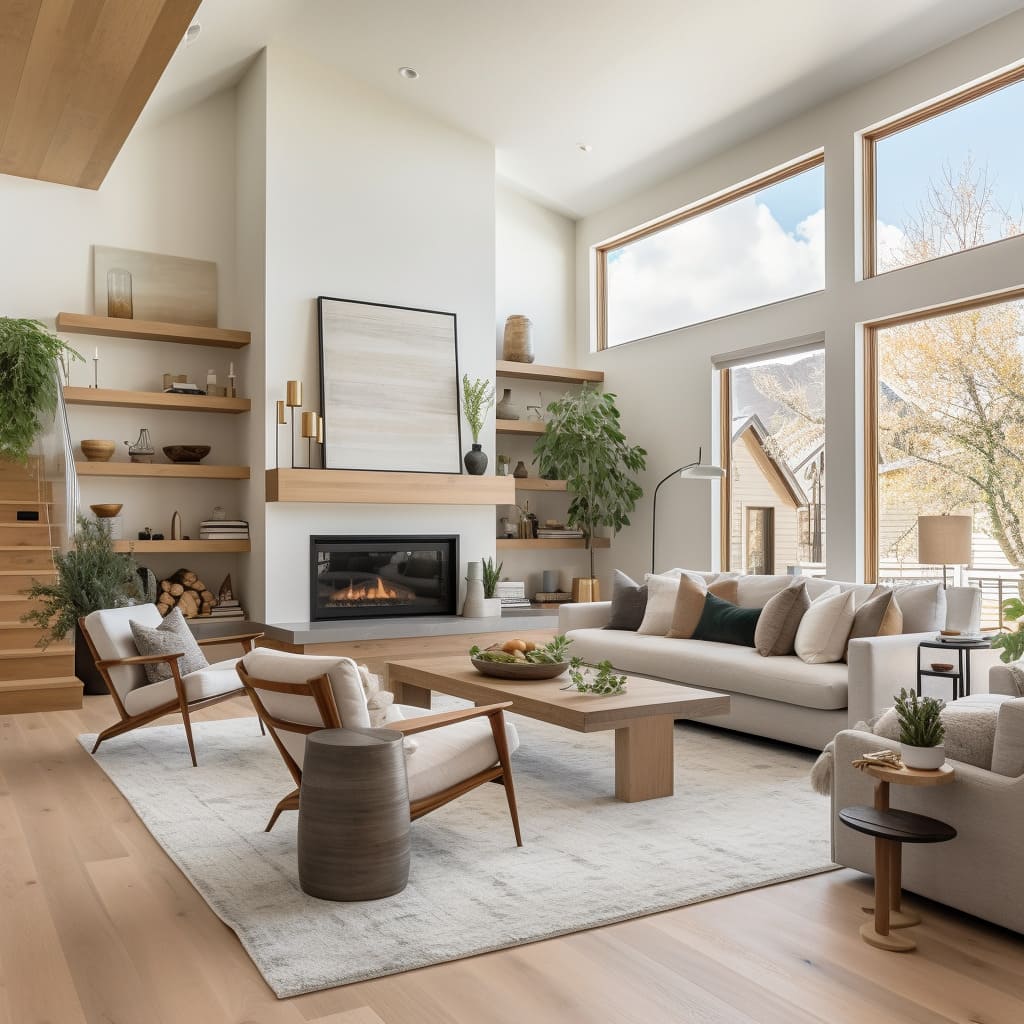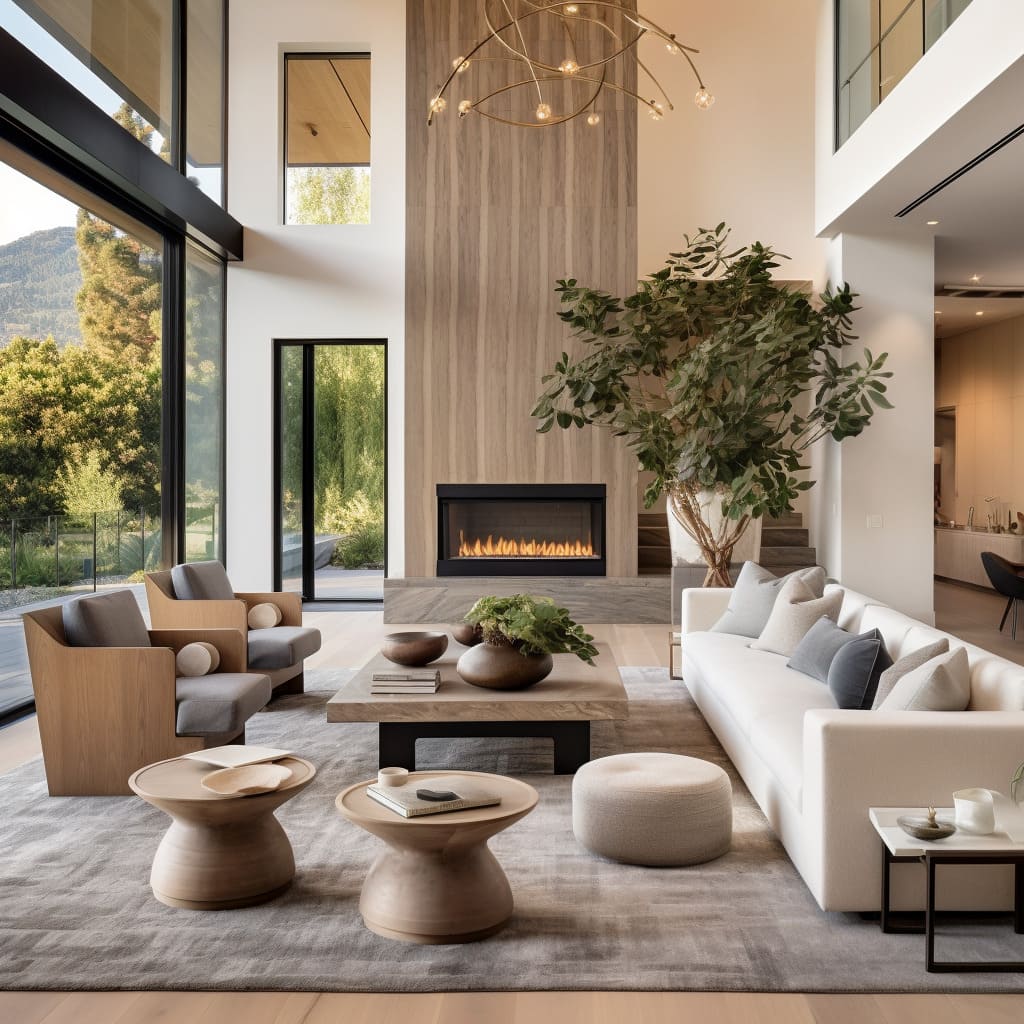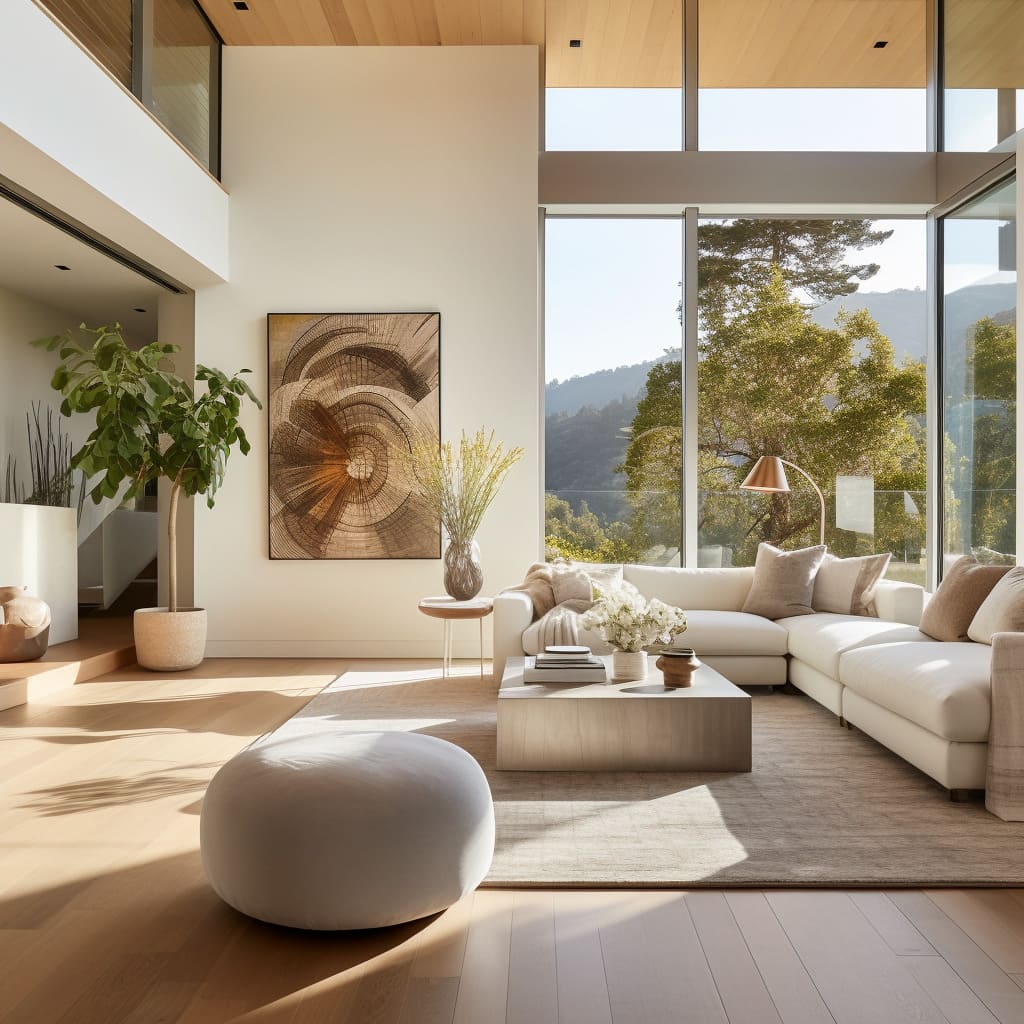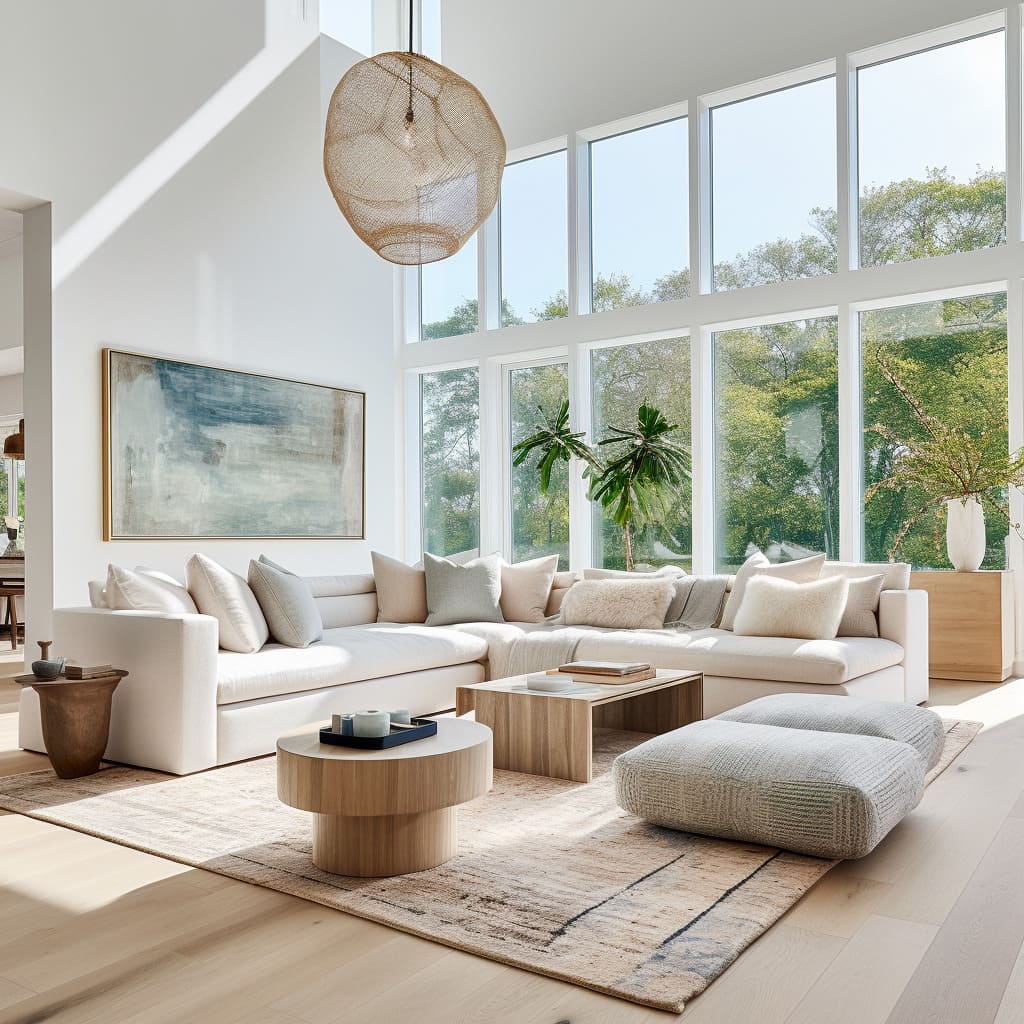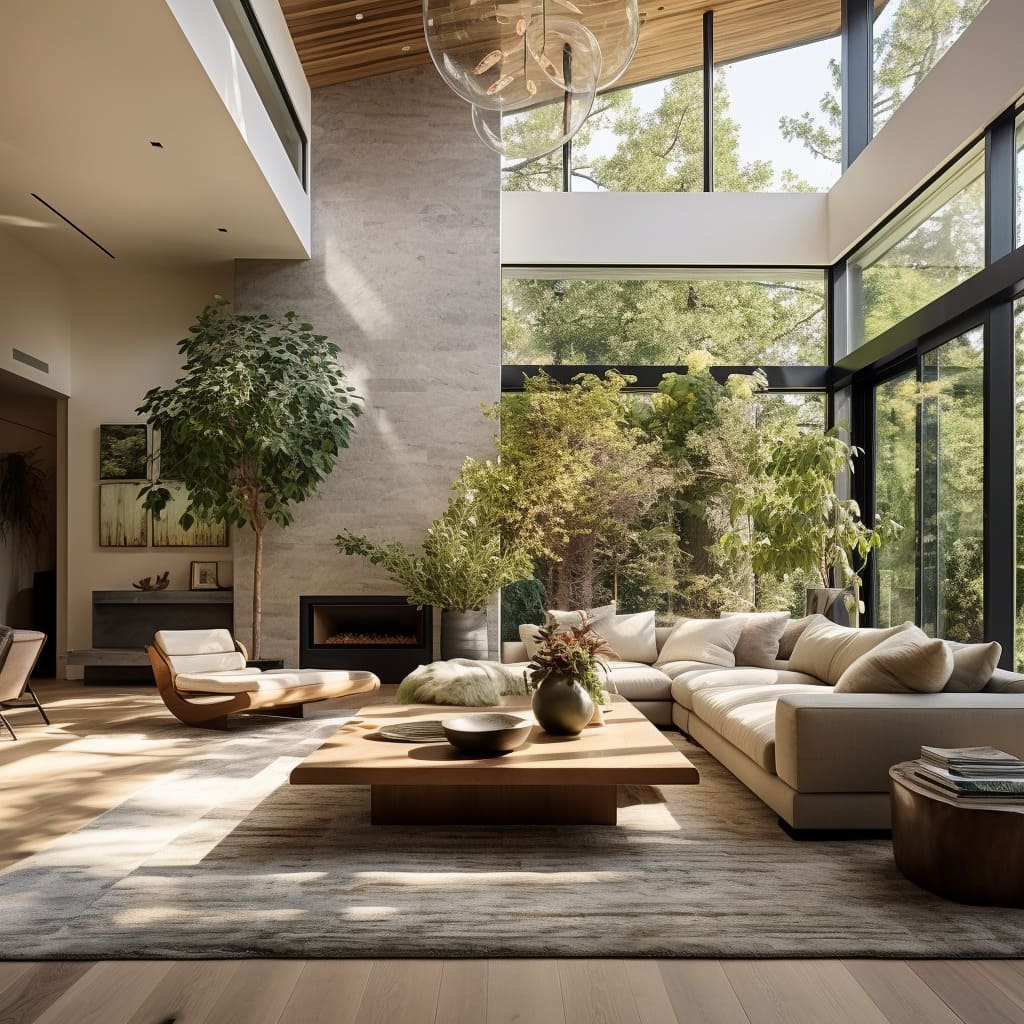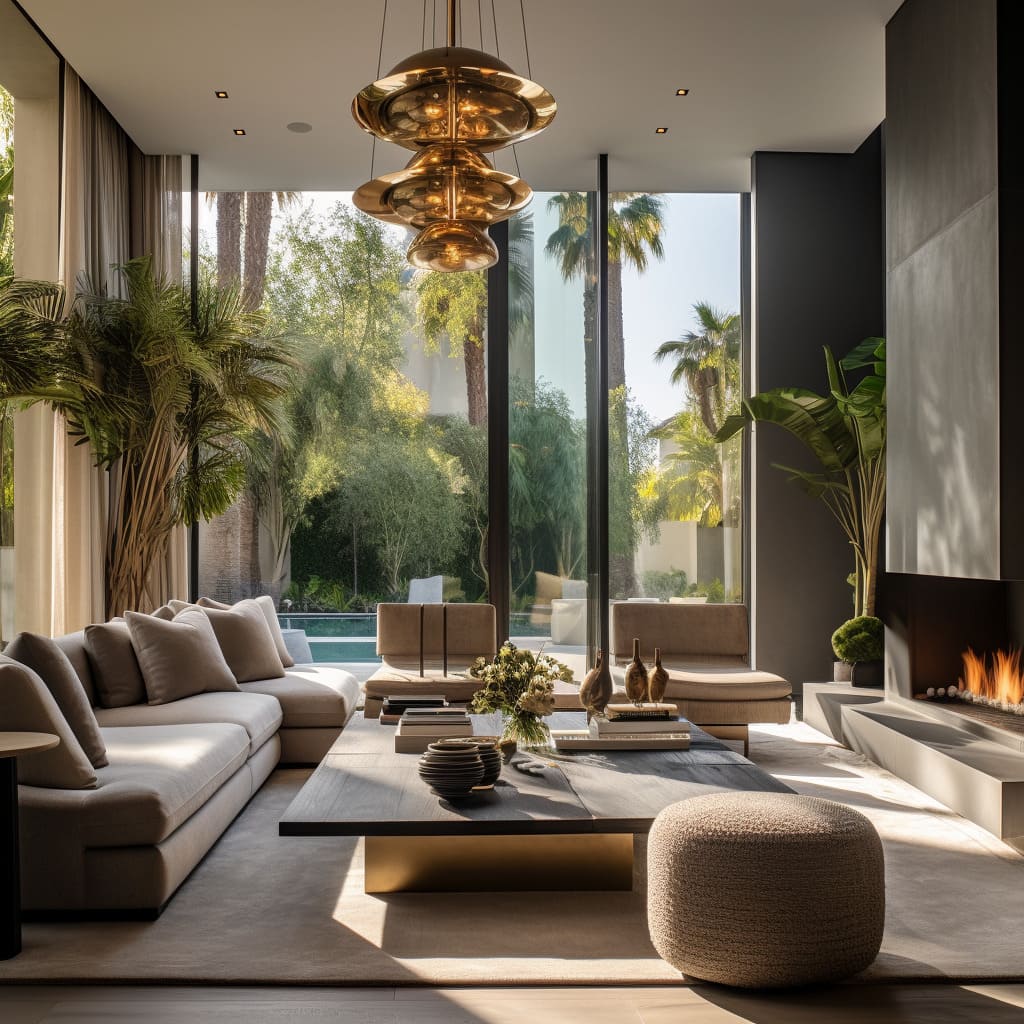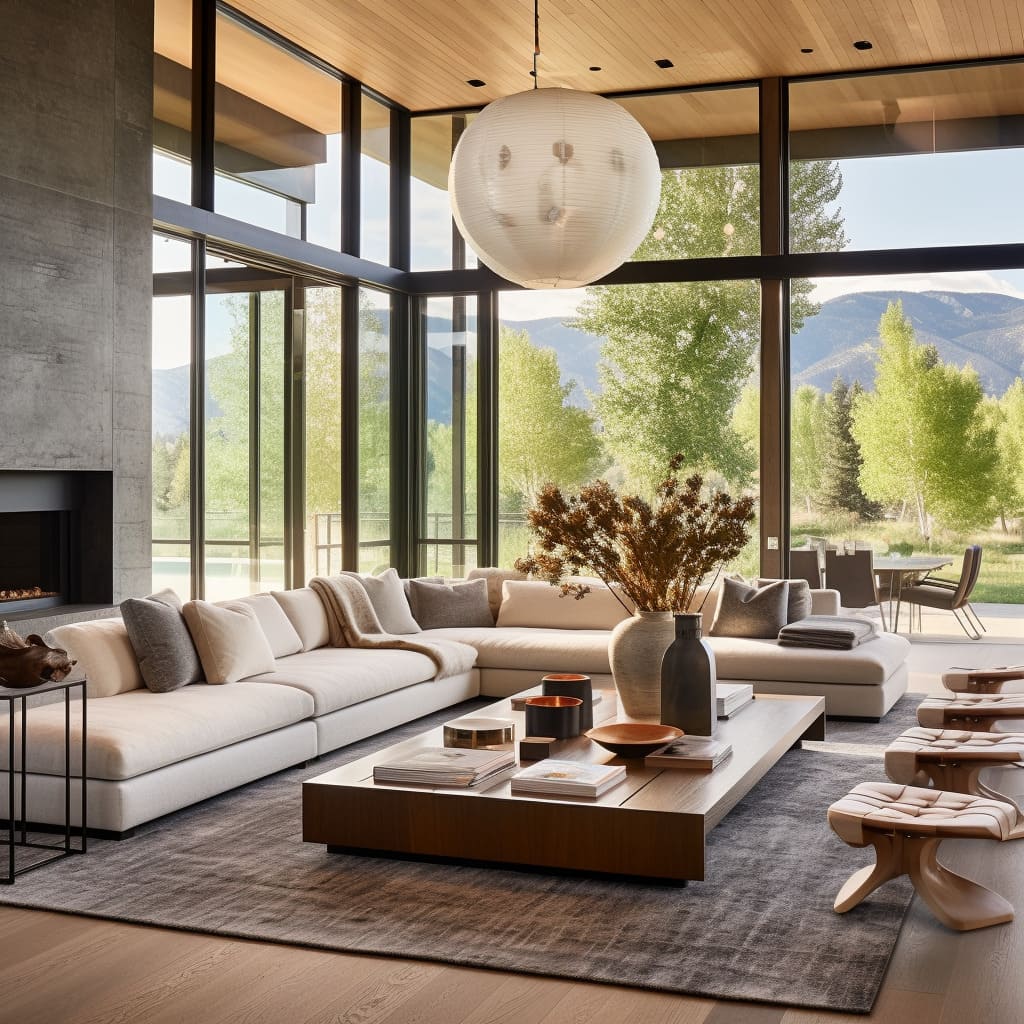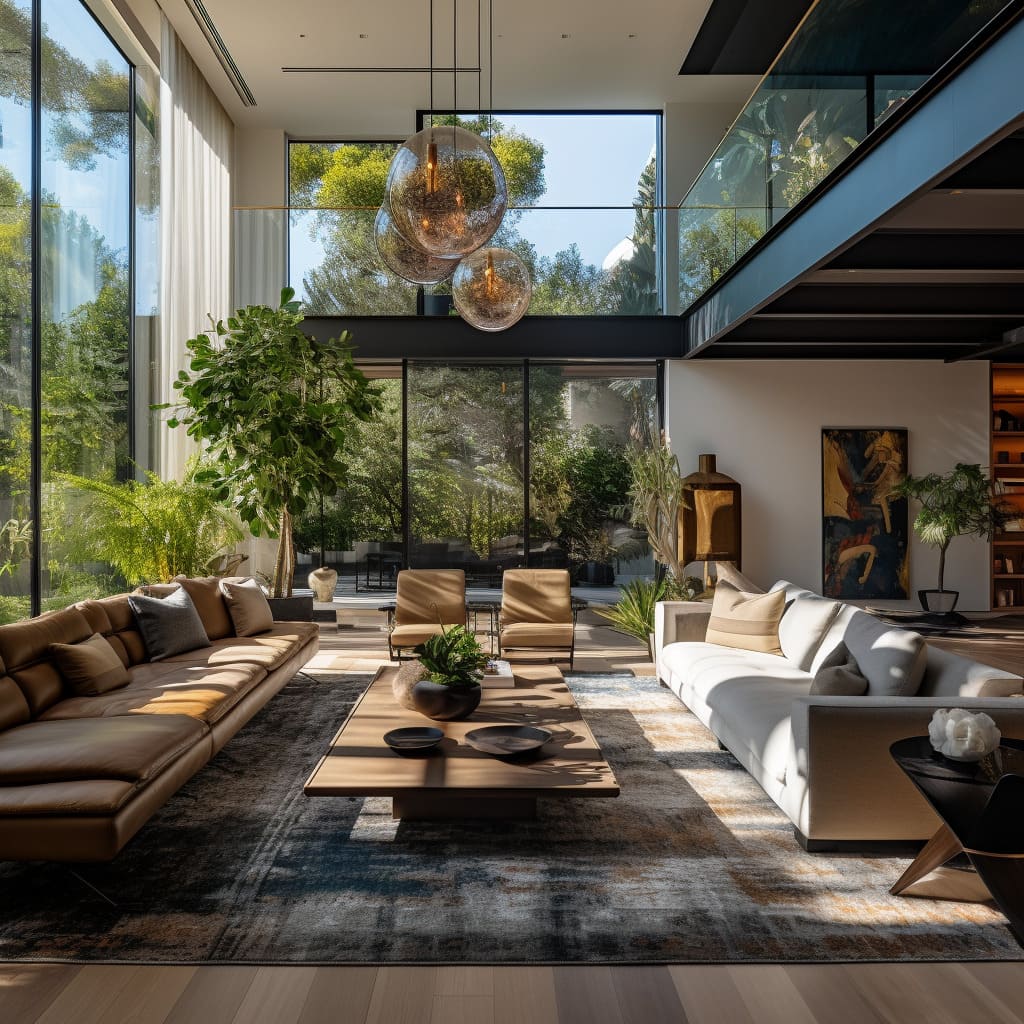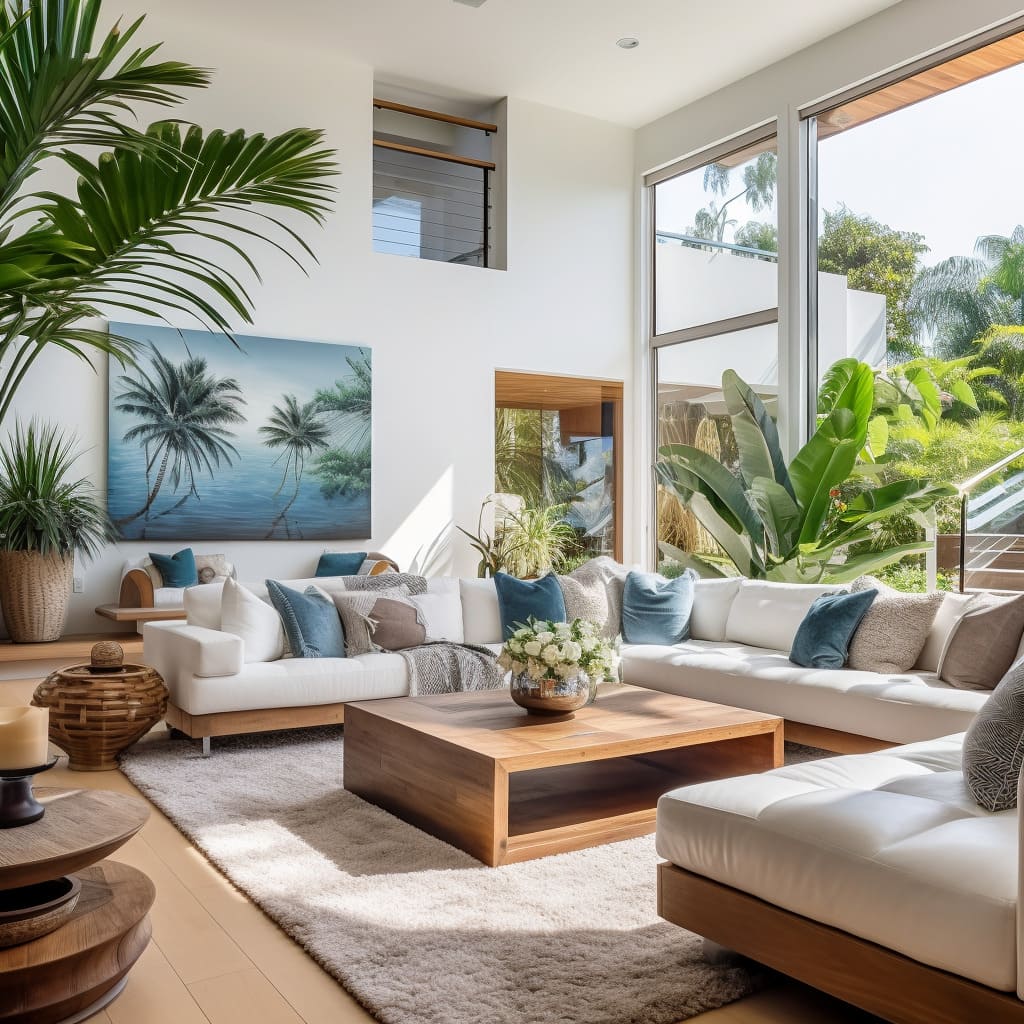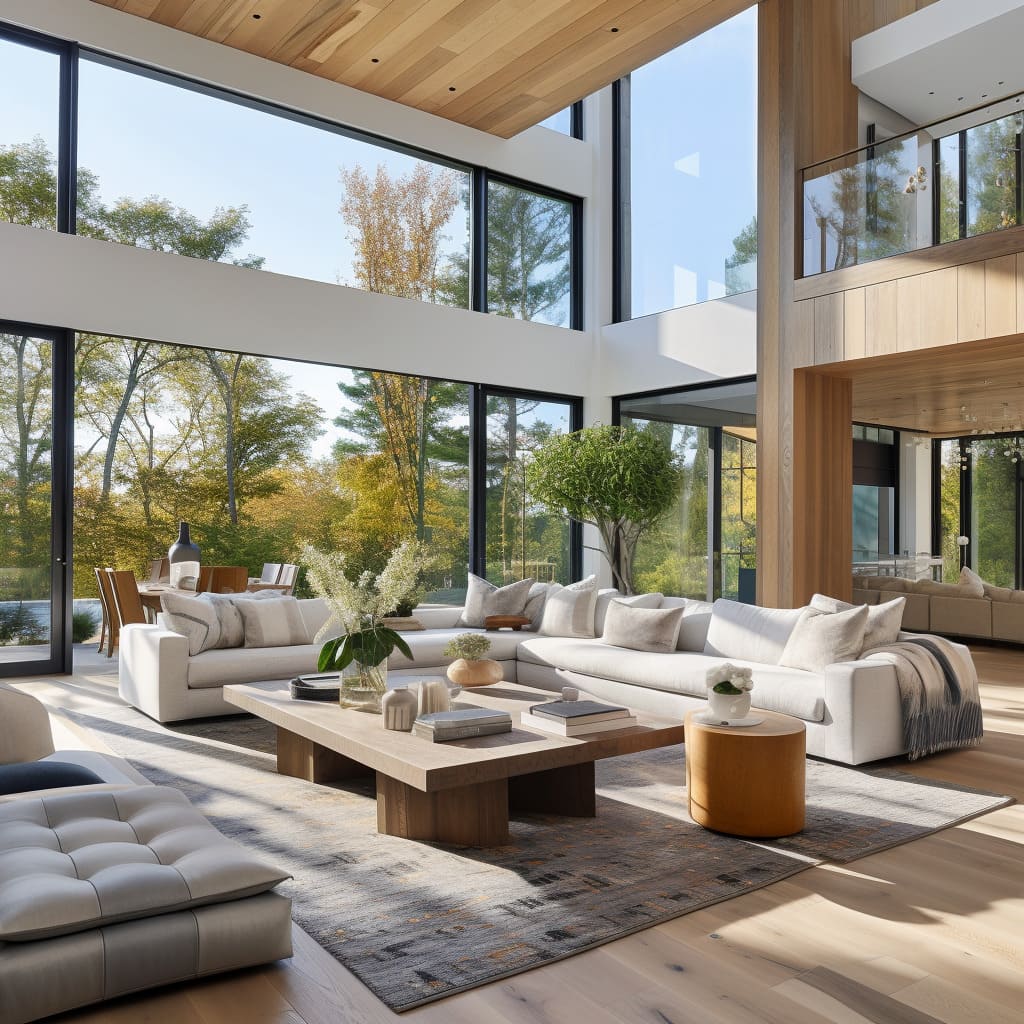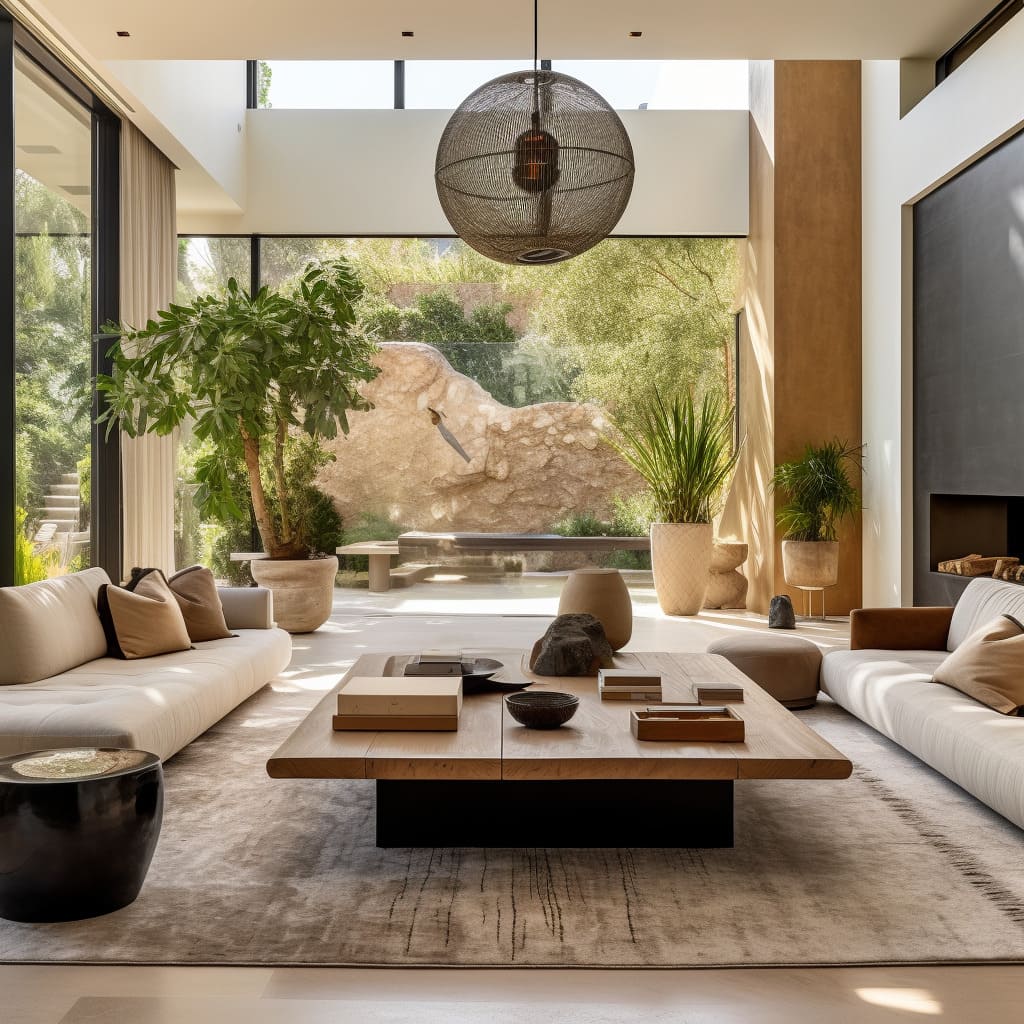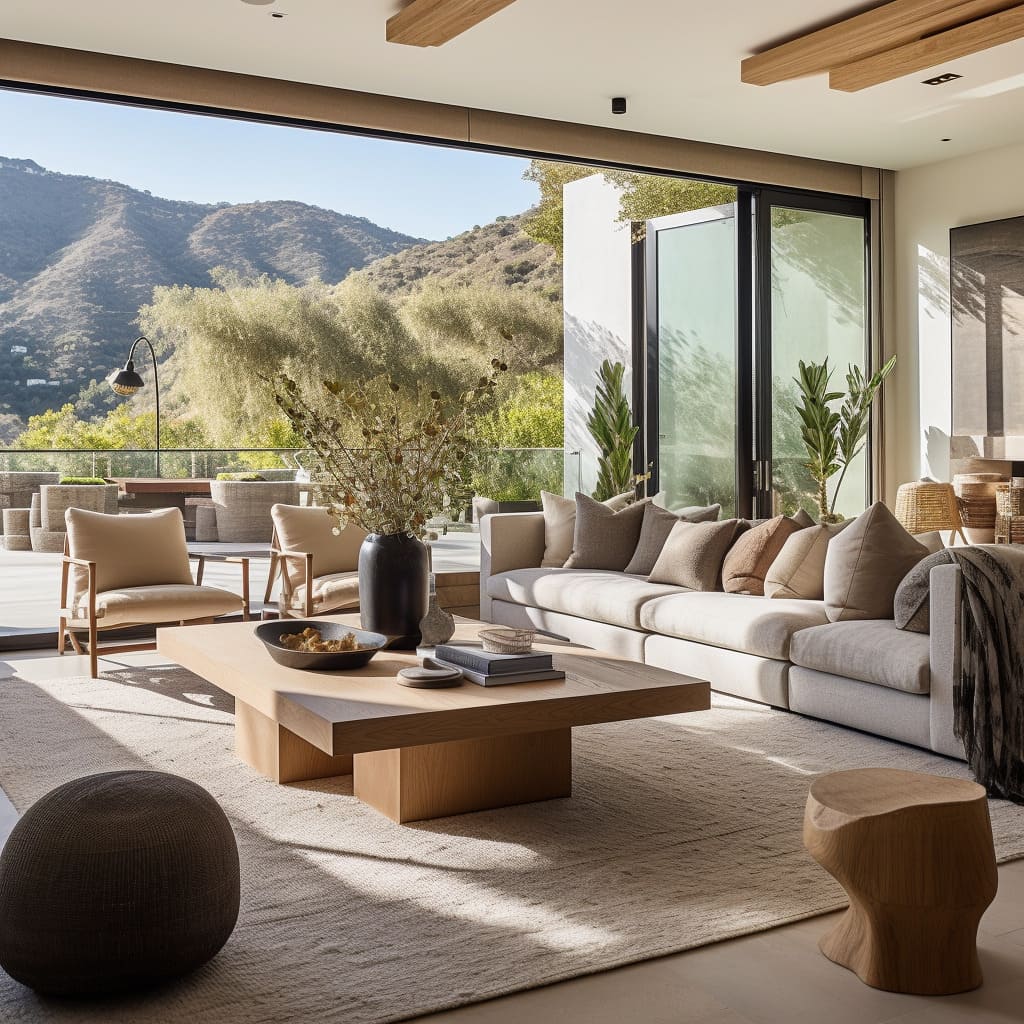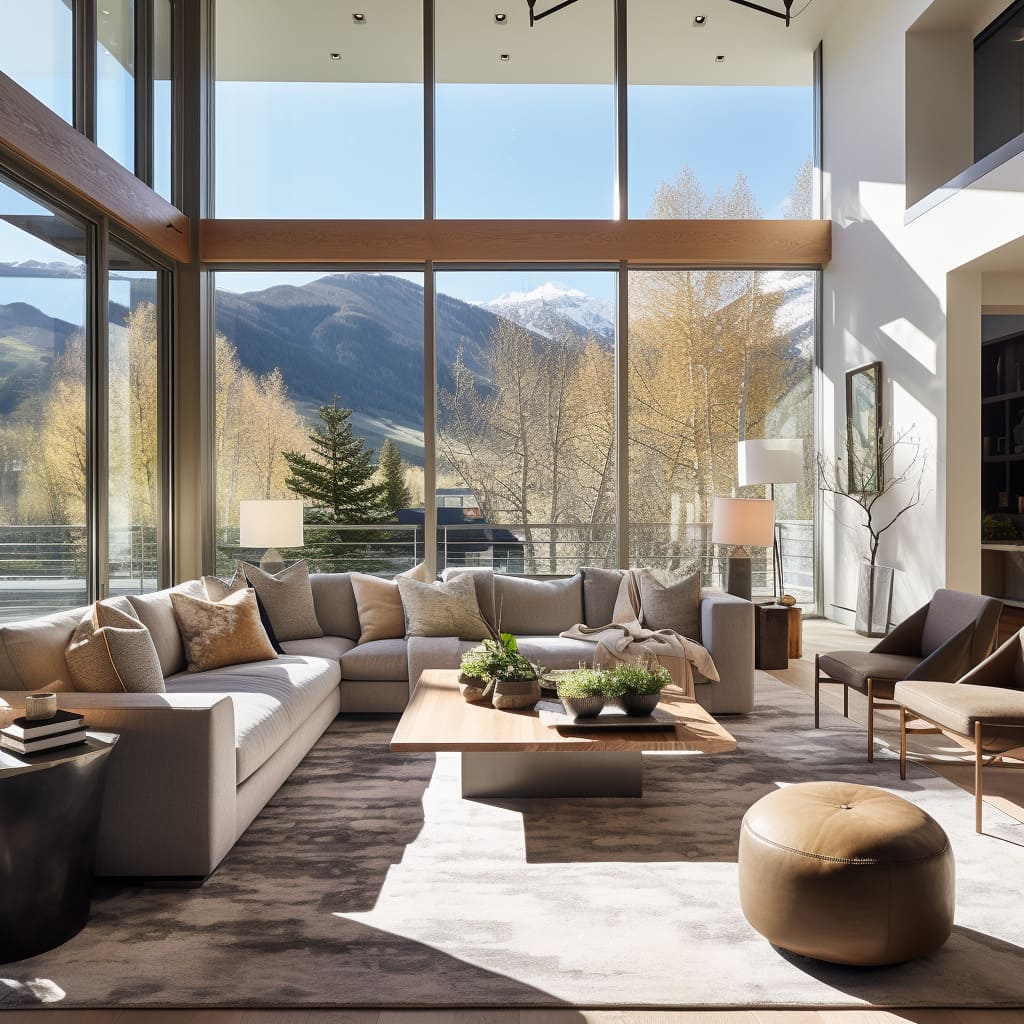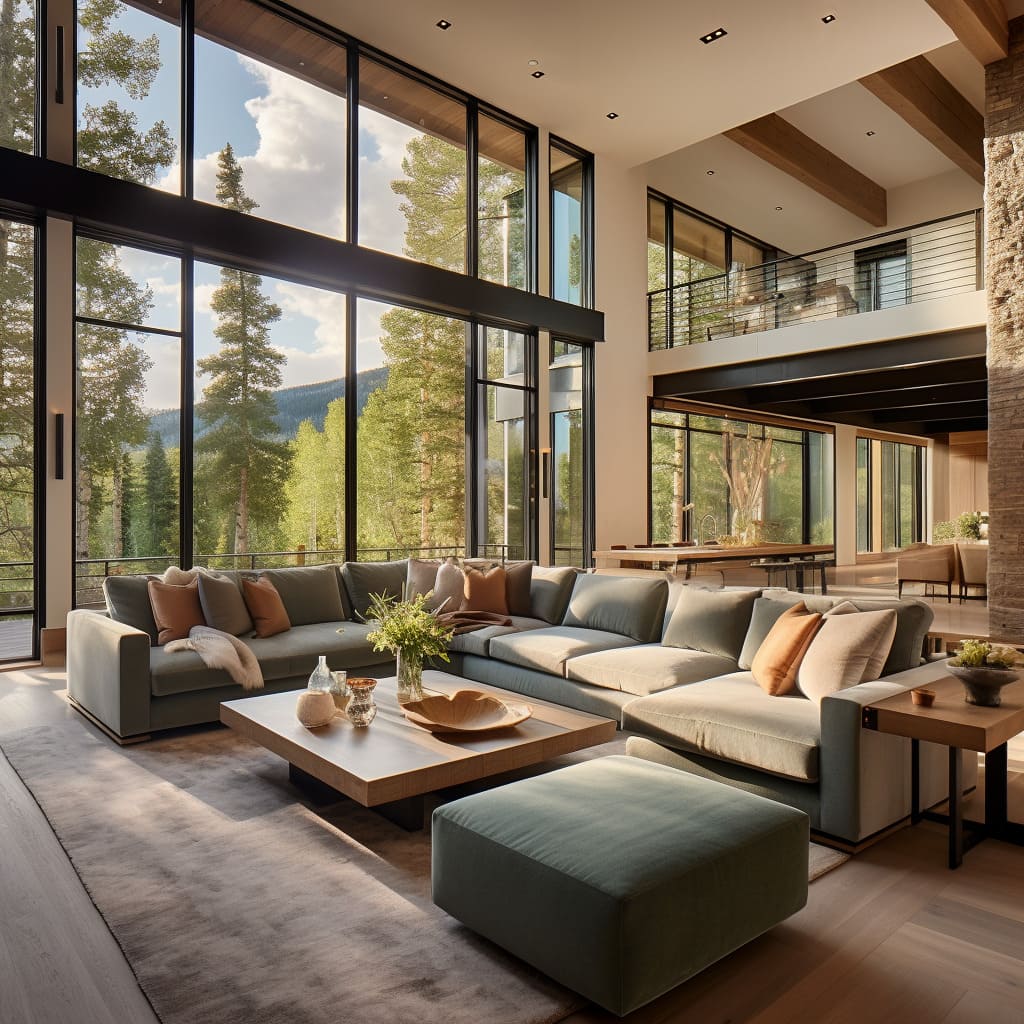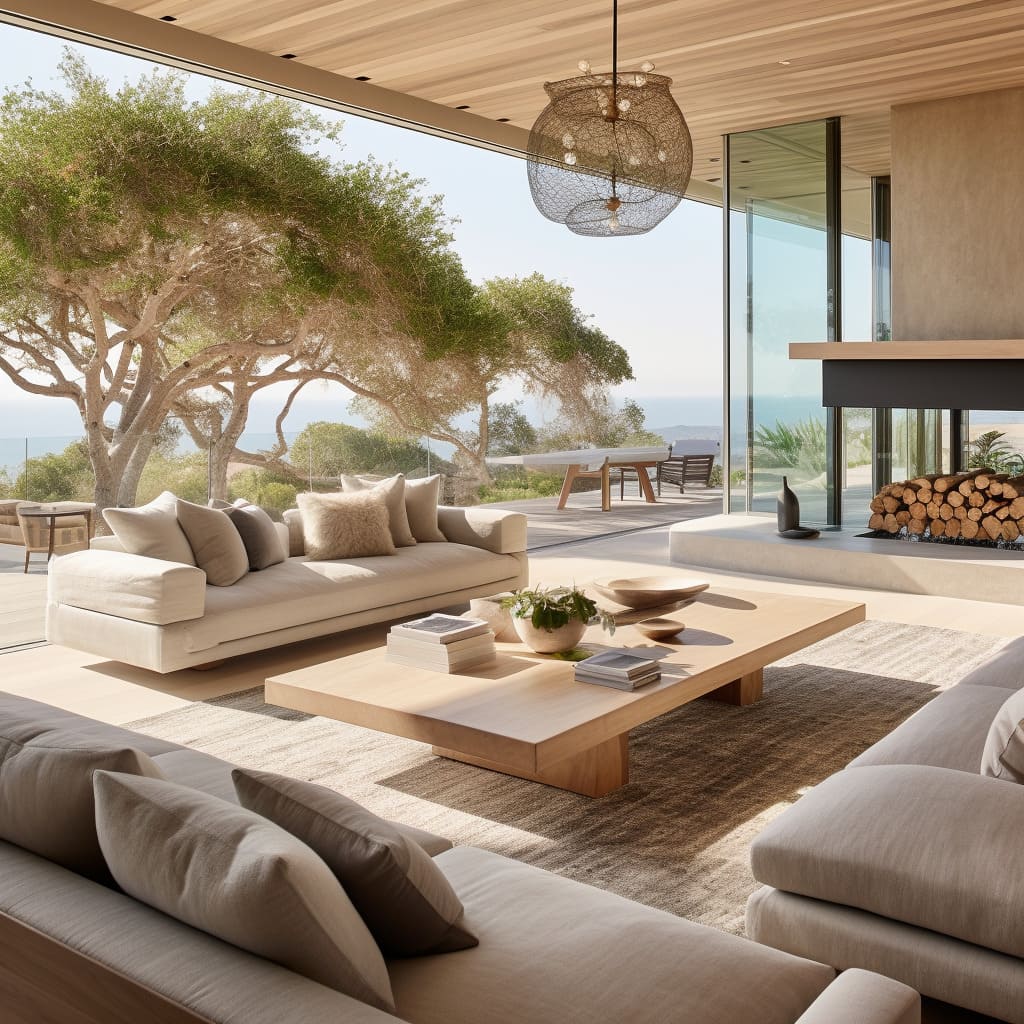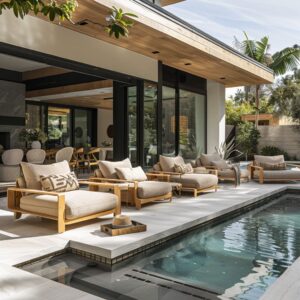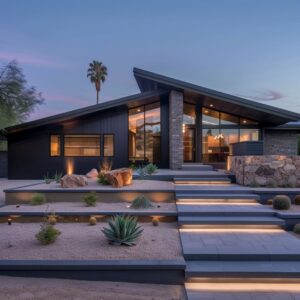In an age where clutter and complexity can overwhelm our spaces and lives, the modern minimalist approach to interior design emerges as a refreshing and elegant antidote. This design philosophy, celebrated for its simplicity, functionality, and understated beauty, has gained prominence in contemporary living spaces worldwide.
At the heart of modern minimalism lies the principle of ‘less is more’, a concept that transcends mere aesthetic to become a lifestyle choice, reflecting a desire for tranquility and uncluttered elegance in our everyday environments.
As we delve into the nuances of this popular design style, we uncover the key elements that make it so appealing and timeless. From the harmonious use of neutral color palettes and natural materials to the thoughtful incorporation of functional yet stylish furniture and decor, modern minimalism is about creating spaces that are not just visually appealing but also soul-soothing and livable.
This article explores the essential components of the modern minimalist aesthetic in interior design. We will examine how each element, from layout and lighting to textures and decorative pieces, comes together to create living spaces that are both serene and sophisticated.
Join us as we embark on this journey into the world of modern minimalism, where every detail is a deliberate stroke in the art of creating tranquil, elegant interiors.
The Main Features of Modern Minimalist Interior Design
Modern minimalism in interior design champions the idea of simplicity and elegance through its distinct characteristics. This design philosophy is marked by clean, crisp lines and a palette that leans towards soft, neutral tones.
Colors like beige, brown, and cream dominate this style, providing a warm and welcoming ambiance to any space.
Furniture selections in a minimalist setting are all about contemporary, straightforward designs. Sofas are often large and modular, boasting smooth, curved lines that foster comfort and encourage socializing.
In the same vein, coffee tables make a statement with their rounded shapes and light wood finishes, seamlessly blending with the overall color theme.
Lighting plays a crucial role in modern minimalism, with standout pieces like oversized woven pendant lights not only illuminating the space but also adding a textural variance against the backdrop of sleek furniture. The use of natural materials is prevalent, with wooden elements like bookshelves, coffee tables, and side tables introducing an organic warmth and texture.
Texture variety is another hallmark of this style. From plush sofa upholstery and smooth wood surfaces to soft throws and cushions, these diverse textures inject depth and intrigue into the room.
The layout is intentionally open and fluid, with furniture arranged to promote easy conversation and movement, thus accentuating the spaciousness of the area.
Decor in a minimalist interior is kept to a bare minimum, with carefully chosen items like neatly arranged books, tasteful pottery, and sculptural pieces that resonate with the modern aesthetic without causing visual clutter. A significant aspect of modern minimalism is the incorporation of large windows that not only offer picturesque views of the outdoors but also invite abundant natural light, further enhancing the room’s openness and connection to nature.
In essence, modern minimalist interior design is a celebration of style and functionality, creating a serene, luxurious, yet comfortably livable space.
How Much Can Your Budget Cover?
See what’s possible with your budget. Just a few details away from instant results!
Enter values to determine renovation level
Harmonious Hues: Crafting Calm
In modern minimalist interior design, the color scheme plays a pivotal role in shaping the atmosphere of a space. It’s a carefully curated blend of neutral and earthy tones, meticulously chosen to evoke serenity and sophistication.
The foundation of this palette rests on various shades of beige and cream, establishing a tranquil base for the entire area. These hues are celebrated for their versatility and their innate ability to foster a peaceful, adaptable environment.
The walls, ceiling, and flooring are all enveloped in these neutral tones, ensuring a smooth visual continuity throughout the space.
To add dimension and depth, accents of deeper browns and tans are introduced via furniture and decorative elements. The rich browns in throw pillows or the warm tans of books on a coffee table anchor the airy lightness of the beige, ensuring the space doesn’t drift into monotony.
But the color story in a minimalist interior isn’t just about hue; it’s also about texture. The varied materials – from the plushness of sofa upholstery to the sleekness of wooden surfaces – create subtle variations within the same color family.
Wood grains infuse a richer hue, adding complexity, while matte ceramics offer a gentler contrast.
Minimalist interiors often feature restrained uses of darker shades or metallics, like in lamp fixtures or bookshelf details. These touches bring a contemporary flair and a hint of luxury, balancing the neutral theme without overpowering it.
The influence of natural light is also a key player. Large windows allow daylight to permeate the space, dynamically highlighting the warm undertones during the day and transitioning the room to a cooler palette in the evening.
Beyond the walls, the outdoors plays its part. The view of surrounding greenery acts as an ever-changing backdrop, its natural colors harmonizing with the interior’s earthy tones, offering a living canvas that evolves with the seasons.
Furniture: The Cornerstone of Modern Luxury and Minimalism
In the world of modern minimalist interior design, furniture is not just a functional element but a defining factor in establishing the room’s luxurious and contemporary character. The furniture selection is meticulously curated to embody both style and comfort, playing a vital role in shaping the overall ambiance.
Sofa: The highlight of the space is a large, modular sofa with a sleek, contemporary design. Its low profile and curved shape are not only visually appealing but also foster a sense of comfort and encourage social gatherings.
Upholstered in high-quality, light beige fabric, it perfectly complements the room’s color scheme. Accentuated with throw pillows in shades of beige and brown, the sofa becomes a focal point of texture and sophistication.
Coffee Table: A striking, round coffee table anchors the seating area. Made from light-colored wood with a smooth finish, it is both a practical and a decorative element.
Its size and shape harmonize with the sofa, reinforcing the room’s fluidity and circular motif.
Side Tables: The design consistency extends to the side tables, which mirror the rounded contours and natural materials of the central furniture pieces. A notable side table holds a plant pot, featuring a cylindrical form and a finish that matches the coffee table and bookshelf, thus maintaining visual cohesion.
Bookshelf: An impressive, wall-mounted bookshelf draws attention to the room’s height, enhancing its spatial dynamics. Constructed from wood with a light finish, it adheres to the natural, muted palette of the room.
The careful arrangement of books and decorative items on the shelf adds personality without clutter.
Accent Chair: Though partially visible, additional seating like an accent chair likely echoes the main sofa’s aesthetic, with clean lines and a neutral fabric, adding to the room’s harmonious design.
Decorative Elements: The furniture is tastefully accessorized with minimalistic decor. Items like a small, dark-colored tray on the coffee table offer a striking contrast, while a throw on the sofa introduces a tactile, inviting element.
Functional Aesthetics: Beyond their visual appeal, the furniture pieces are selected for their practicality. Their strategic placement allows for effortless movement, reflecting a thoughtful balance between form and function.
Quality and Craftsmanship: The furniture exudes high quality, evident in the meticulous attention to detail and craftsmanship. Durable materials and flawless finishes are indicative of luxury interior design.
Textural Harmony: Weaving Sophistication in Modern Minimalist Design
In modern minimalist interior design, the judicious selection of materials and textures is essential in crafting a space that exudes sophistication and layered elegance. Each material is chosen not only for its aesthetic appeal but also for its ability to harmoniously integrate into the overall design.
Natural Wood: The use of wood is a standout feature in this design approach. Pieces like the coffee table, side table, and bookshelf often boast a light, natural hue with a visible grain, bringing an organic texture into the room.
The wood’s warm tones beautifully offset the neutral color palette, enhancing the space’s overall warmth and natural charm.
Upholstery Fabric: Soft, high-quality fabric adorns the sofa and potential accent chairs, contributing to the room’s comfortable ambiance. The fabric’s fine weave adds a subtle texture, while throw pillows in varied textures, including velvety and linen-like finishes, introduce tactile diversity.
Throws and Rugs: Throws, particularly those with a chunky knit pattern, add a layer of coziness to the seating area. Area rugs, likely featuring a tight weave, elevate the room’s refined aesthetic while softening the flooring beneath.
Ceramics and Pottery: Decorative ceramics with a matte finish provide a delightful contrast to the smoother surfaces of wood and glass. This handmade quality infuses depth and an artisanal touch into the space.
Glass and Metallics: Glass elements, possibly in window panes or decor, offer a smooth, reflective texture. Subtle metallic accents, perhaps in light fixtures or hardware, contribute a sleek, contemporary flair without overwhelming the natural materials.
Stone or Concrete: Architectural elements like fireplaces or wall finishes might incorporate stone or concrete. These materials add a cool, solid texture, balancing the softer textiles and woods.
Woven Materials: An oversized pendant light made from a woven material, such as rattan, introduces an artisanal texture and creates a warm, welcoming light diffusion.
Plant Life: Indoor plants add a dynamic, living texture, complementing the other natural elements with their unique leaf textures. These green companions not only purify the air but also infuse the room with a refreshing sense of vitality and tranquility.
In essence, this interior design approach masterfully combines various materials and textures to create a visually and tactilely engaging environment. The interplay of natural wood, soft fabrics, knit throws, woven light fixtures, and matte ceramics establishes a space that is luxurious yet inviting, modern yet imbued with warmth.
This strategic blend of textures enriches the neutral color scheme and underscores the design’s connection to nature and craftsmanship.
Nature and Light: Vital Elements in Modern Minimalist Design
Modern minimalist interior design goes beyond mere aesthetics to embrace a deep integration with nature and a strategic harnessing of natural light. These elements are fundamental in contemporary architecture and design, contributing significantly to the living experience within a space.
Large Windows: A striking feature of this design approach is the extensive use of floor-to-ceiling windows. These vast panes create a nearly invisible barrier between the indoors and the outdoors, allowing for a continuous visual connection with the natural environment.
Our latest article highlights how modern architecture is redefining residential spaces with expansive windows that blur the line between interiors and the outdoors.
The changing scenes of nature, visible through these windows, serve as dynamic and living artwork, enriching the interior’s aesthetic appeal.
Natural Light: The windows serve a dual purpose, not only offering stunning views but also flooding the space with natural light. This light transforms the ambiance throughout the day – from the gentle morning glow to the bright noontime light and the soft golden hues of dusk.
The presence of natural light not only enhances mood and well-being but also beautifully highlights the textures and colors of the room’s materials.
Reflection and Shadow Play: The interplay of light and shadow within the interior adds a dynamic quality to the space. As sunlight shifts and moves, it casts varying reflections and shadows, such as those from the woven pendant light or plant leaves, creating a sense of movement and change within the room.
Indoor Plants: The connection with nature is further reinforced through the inclusion of indoor plants. Their natural green hues provide a striking contrast to the room’s neutral tones, adding vitality and a touch of the natural world.
Beyond aesthetics, these plants also contribute to improved air quality.
Natural Materials: Emphasizing this natural theme, materials like wood and stone are often chosen for their organic beauty. These elements are usually presented in a state that celebrates their inherent textures and hues, mirroring the natural environment.
Outdoor-Indoor Continuity: The design often extends beyond the interior, with outdoor furniture and landscaping chosen to complement the inside space. This approach ensures stylistic harmony between the interior and exterior, using similar color schemes, materials, or plantings to blur the lines between indoors and outdoors.
Thermal Comfort: The use of natural light is also a practical consideration, involving thermal comfort. Designs might include features like shades or smart glass to regulate sunlight intensity, ensuring a comfortable indoor temperature and light level.
Orientation and Positioning: The placement and orientation of the room relative to the sun’s path is thoughtfully considered. Such strategic positioning optimizes the benefits of natural light for both illumination and heating, while also providing expansive views and a sense of openness.
In summary, the integration with nature and the use of natural light are not simply decorative elements in modern minimalist design; they are integral to creating a space that offers visual, emotional, and physical comfort. This approach fosters an environment that is both energizing and restful, truly a sanctuary in the modern world.
Fluidity and Function: Mastering Layout in Modern Minimalist Living Rooms
The art of crafting a living room layout in modern minimalist design is an intricate process that balances functionality with aesthetic appeal. The approach taken in these spaces is both deliberate and thoughtful, ensuring that every aspect of the layout contributes to a cohesive, comfortable, and visually pleasing environment.
Open Plan Concept: These living rooms typically embrace an open plan, characterized by the absence of dividing walls. This design choice not only imparts a sense of spaciousness but also fosters a more social and inclusive atmosphere.
Various functional areas – for lounging, entertaining, dining, or even working – seamlessly connect within this open space.
Zoning Techniques: Despite the open layout, furniture arrangement plays a crucial role in subtly defining different zones for specific activities. The sofa and coffee table, for example, naturally delineate a lounge area centered on relaxation and conversation.
A strategically placed bookshelf might suggest a cozy reading nook or a personal display space.
Circulation and Movement: The layout ensures ample space around each furniture piece, facilitating easy movement within the room. Wide pathways between items prevent a cramped feeling and allow for a natural flow, a key consideration in any living room.
Strategic Orientation: Furniture is thoughtfully oriented to maximize enjoyment of natural light and outside views. A sofa facing the windows, for instance, allows occupants to appreciate the outdoor scenery and benefit from ambient light.
This orientation may also be geared towards entertainment features like televisions or fireplaces.
Symmetry and Balance: A harmonious balance is evident in the layout, achieved either through symmetrical furniture placement or a balanced arrangement of asymmetrical pieces. This sense of equilibrium contributes to the room’s tranquil and inviting atmosphere.
Versatility and Adaptability: Modular furniture elements, such as sectional sofas, indicate an adaptable layout. This flexibility allows residents to reconfigure the space according to different needs or occasions.
Focal Points: The room’s layout often revolves around certain focal elements like a prominent pendant light or a central coffee table. These features draw the eye and structurally anchor the space.
Proportion and Scale: Furniture selection is attuned to the room’s dimensions. Large pieces like a spacious sofa or a round coffee table are proportionate to the area, ensuring harmony between the room’s size and its contents.
Cohesive Integration: The layout is seamlessly integrated with other design elements such as lighting, color schemes, and material choices. For instance, the furniture’s color and texture might complement the overall neutral palette and natural materials prevalent in the room.
Functional Aesthetics: Beyond visual appeal, the layout emphasizes practicality. The central coffee table serves dual purposes of aesthetics and utility, while the bookshelf offers clutter-free storage and display options.
In summary, the layout of a modern minimalist living room is a well-orchestrated blend of open space, strategic zoning, and thoughtful furniture placement. It creates an environment that is not only visually appealing but also highly functional, enhancing the living experience through a sense of order, spaciousness, and a deep connection with the surrounding environment.
Accentuating Elegance: Decorative Elements
In the modern minimalist living room, decorative elements are more than mere adornments. They are integral to the room’s character, carefully chosen to enhance the aesthetic while infusing personality and visual intrigue.
Strategic Placement: Decorative items are thoughtfully positioned to avoid clutter. The coffee table, for instance, becomes a focal point for a few handpicked pieces.
Stacked books offer a cultured feel, while a small tray or sculpture introduces a contrasting shape or hue to captivate the eye.
Artistic Objects: The inclusion of artistic pieces, such as a sculptural tree-like object near the window, adds an organic element to the room. This not only bridges the indoor-outdoor divide but also injects a unique artistic touch.
Books as Decor: Books serve a dual purpose – as sources of knowledge and as decorative objects. Their strategic arrangement, both vertical and horizontal, introduces a visual rhythm and breaks any alignment monotony, adding a personalized touch that reflects the inhabitants’ interests.
Vases and Pottery: A careful selection of vases and pottery in neutral tones and matte finishes underscores the room’s color scheme. The varied shapes and heights of these pieces contribute to a sense of diversity and a collected-over-time ambiance.
Textiles: Throw pillows and blankets are more than comfort items; they add layers of texture. Staying within the neutral theme, they vary in material from smooth fabrics to tactile options like velvet or chunky knits, adding depth to the space.
Plant Life: Indoor plants play a vital role as decorative elements, introducing greenery and natural forms. Their strategic placement ensures they enhance rather than overwhelm, contributing organic shapes and colors.
Lighting as a Feature: The oversized woven pendant light doubles as a light source and a statement piece. Its texture and size make it a standout element, adding distinctive character to the room.
Rugs for Comfort and Style: The area rug under the coffee table is not just functional; it also contributes to the room’s comfort and aesthetic. Its texture offers a contrast to the smooth flooring, while its color harmonizes with the neutral scheme.
Artwork Integration: Artwork, though subtly present, aligns with the room’s design ethos. Likely abstract or modern, these pieces complement the color scheme and add a thoughtful, uncluttered dimension to the walls.
Functional Decor: Items with a practical use, like storage containers or coasters, are selected for both their utility and aesthetic value, ensuring they enhance the room’s overall design.
Reflection of Personal Style: The decorative choices reflect the personal style and tastes of the inhabitants, making the space feel authentic and inviting. This is evident in the selection of books, pottery styles, or art pieces.
In conclusion, the decorative elements in this modern minimalist living room are carefully integrated, not as mere additions but as essential components that contribute to the space’s elegance, comfort, and individuality. They harmonize with the furniture, layout, and material choices, adhering to a neutral color scheme and natural textures, while still allowing for personal expression and style.
Wrapping Up: The Subtle Art of Minimalist Design
In summary, the exploration of modern minimalist aesthetic in interior design reveals a philosophy where less is indeed more. This approach is not just about reducing elements to their bare essentials, but rather about crafting spaces that resonate with simplicity, functionality, and elegance.
The modern minimalist living room, as discussed, stands as a testament to this design ethos, blending form and function seamlessly.
From the strategic use of natural materials and textures to the thoughtful integration of furniture and layout, each aspect of the design contributes to creating a harmonious and sophisticated environment. The careful selection of color schemes, the emphasis on natural light and connectivity with the outdoors, and the meticulous placement of decorative elements all work in unison to create a serene and inviting space.
This style of interior design goes beyond aesthetic appeal, focusing on creating environments that are not only visually pleasing but also emotionally calming and physically comfortable. The modern minimalist living room is a space where every element has a purpose, and where the overall ambiance is one of tranquility and understated luxury.
As we conclude, it’s evident that the modern minimalist aesthetic in interior design is much more than a trend; it’s a reflection of a lifestyle choice that values quality over quantity, serenity over chaos, and elegance in simplicity. It’s a design approach that invites us to rethink our spaces and our relationship with the objects and elements that fill them, encouraging a life that is both purposeful and beautiful.



